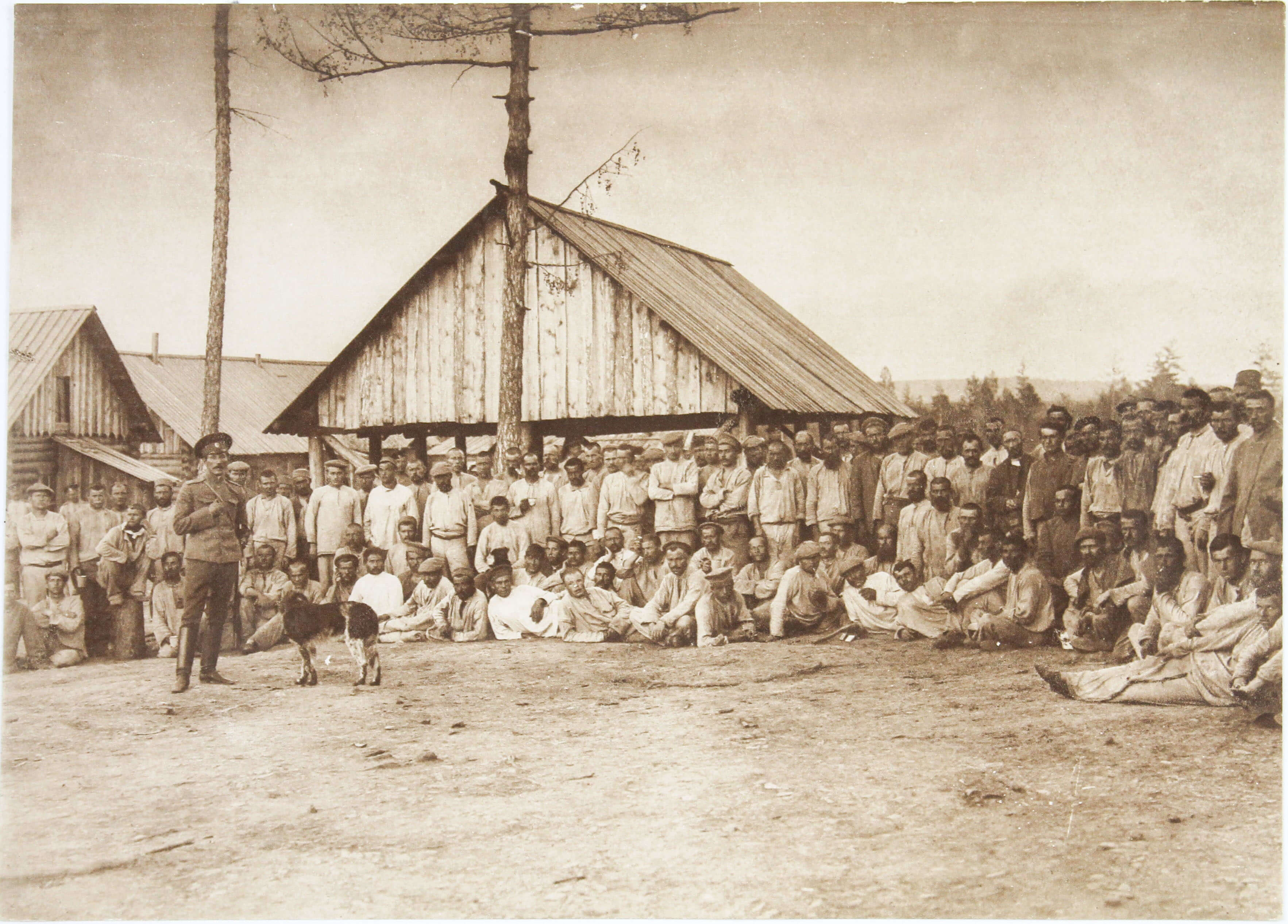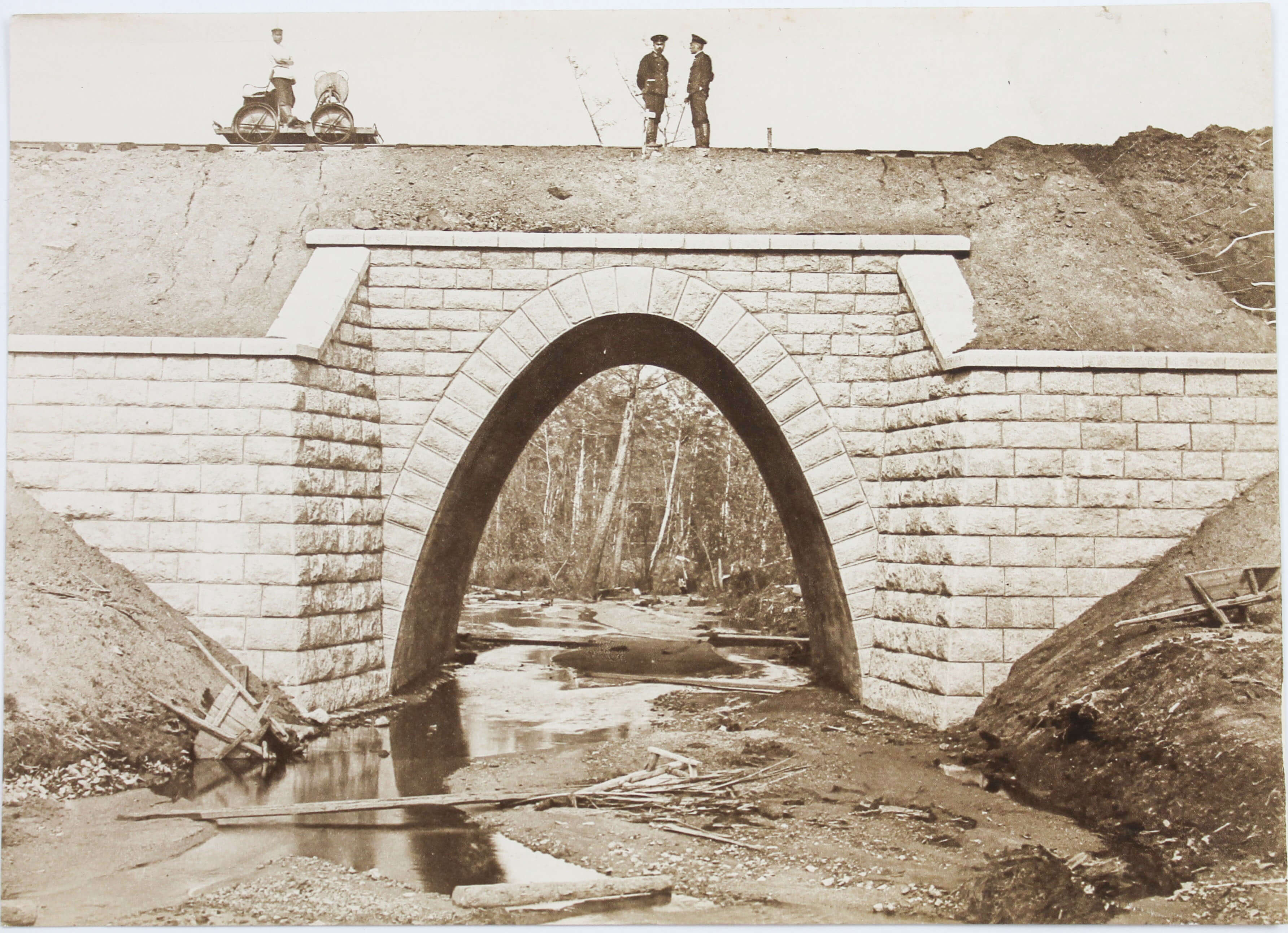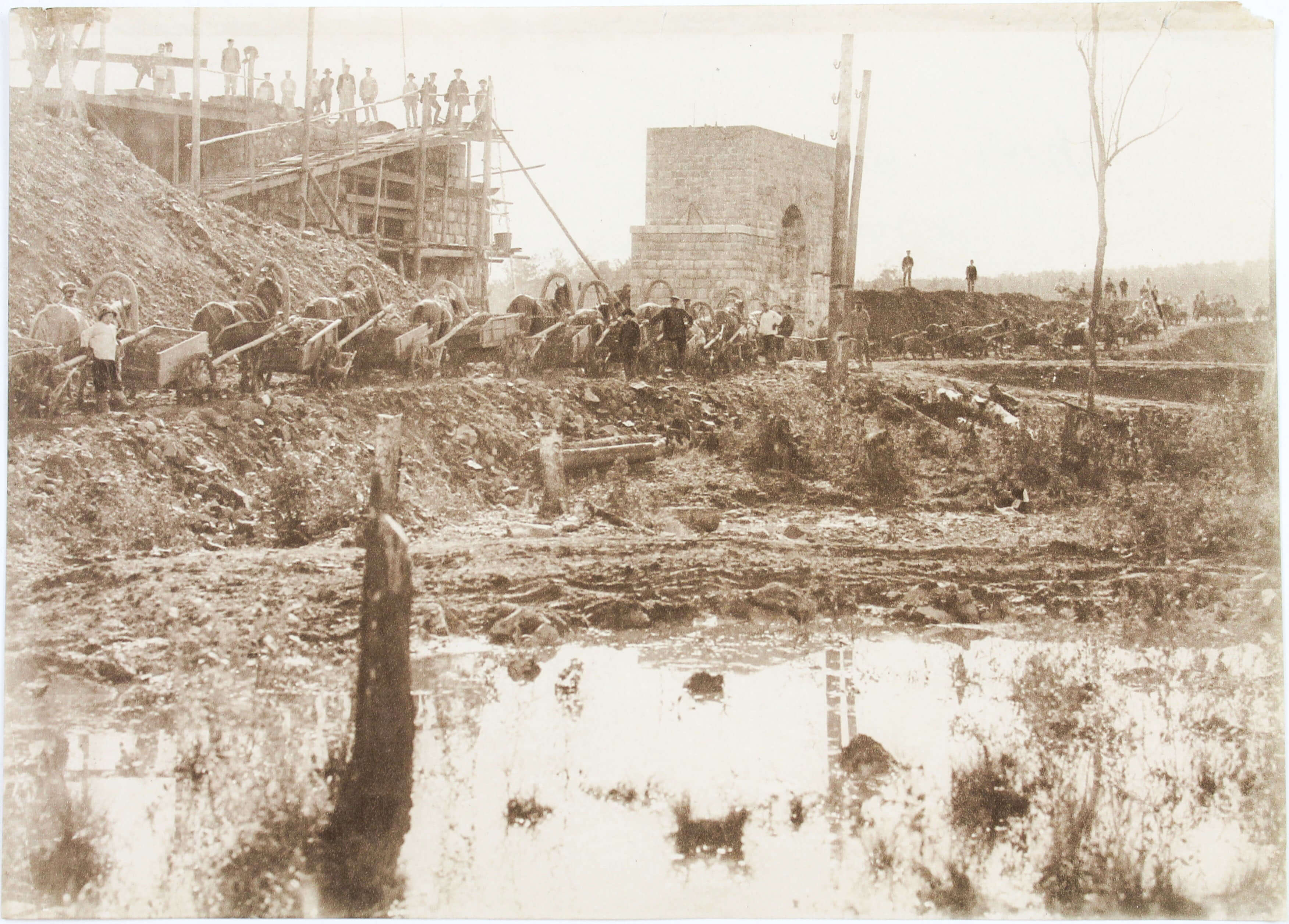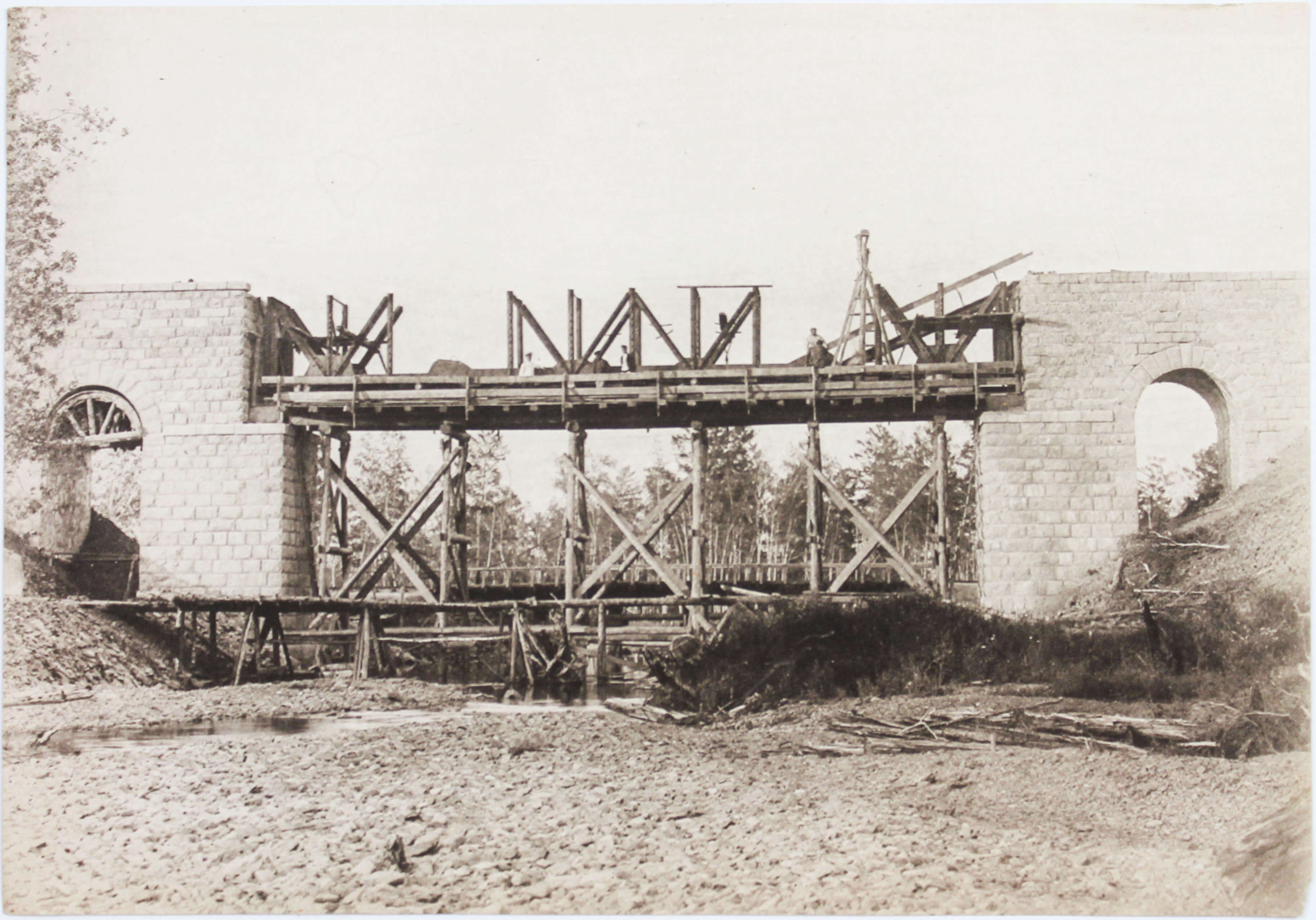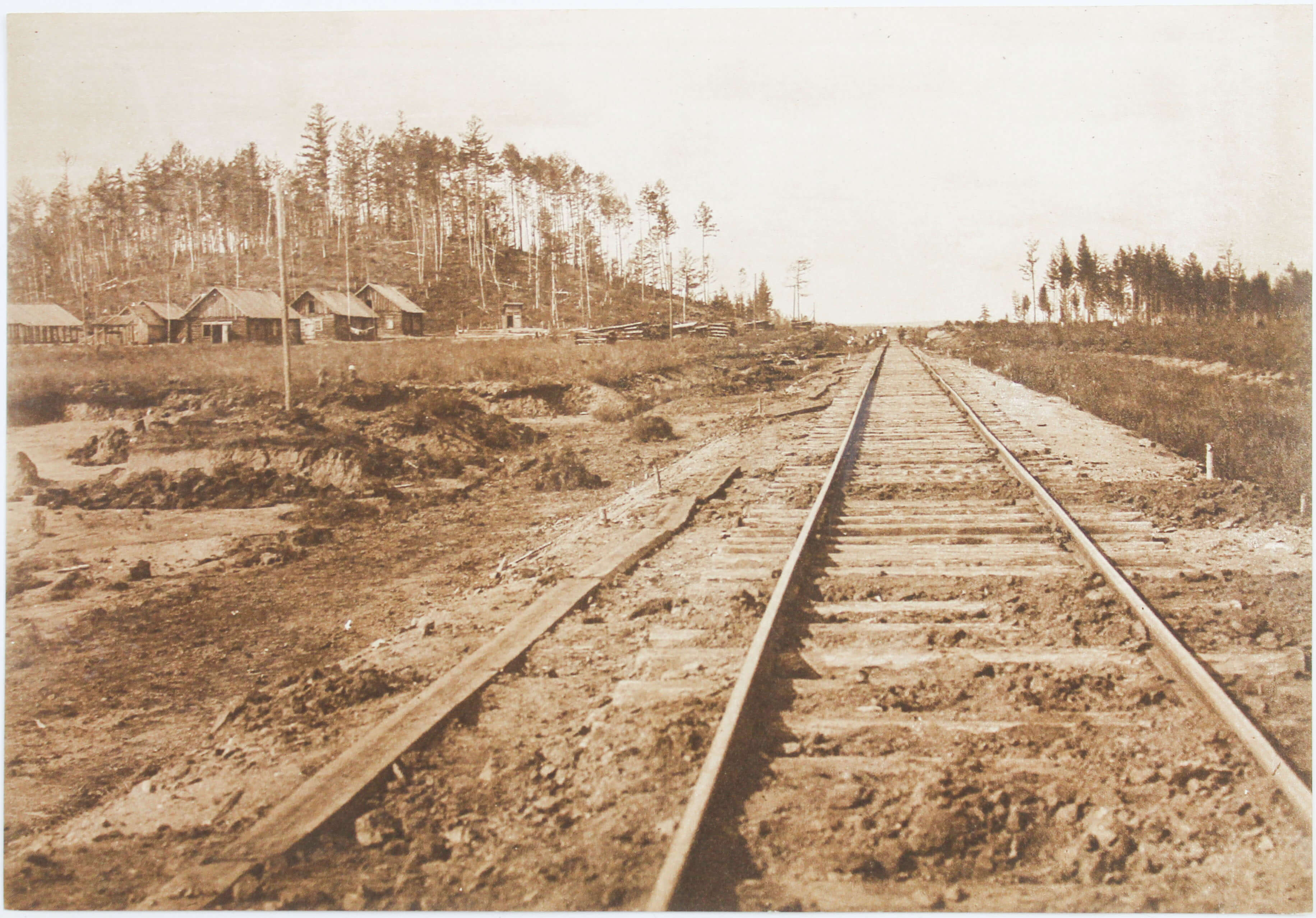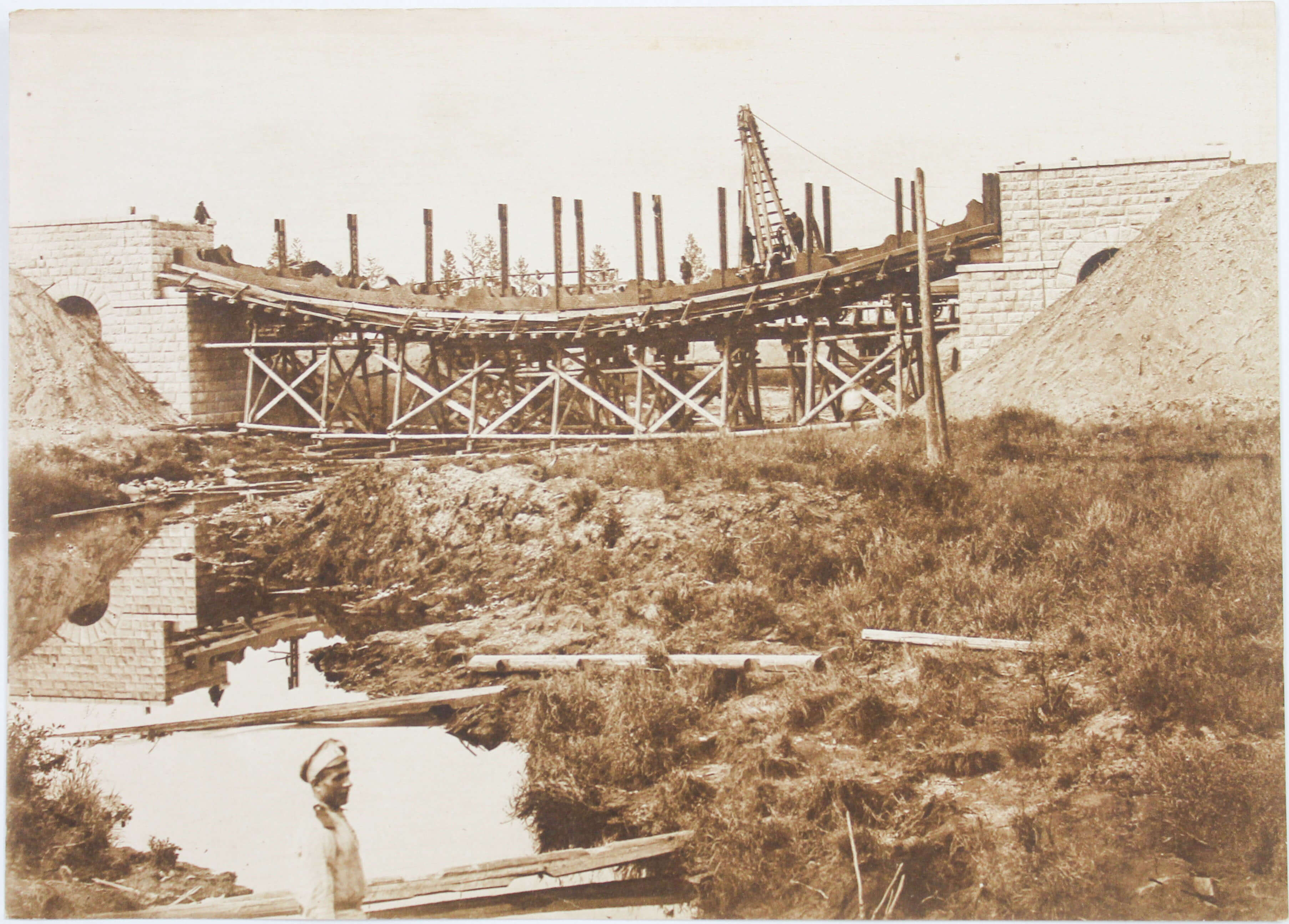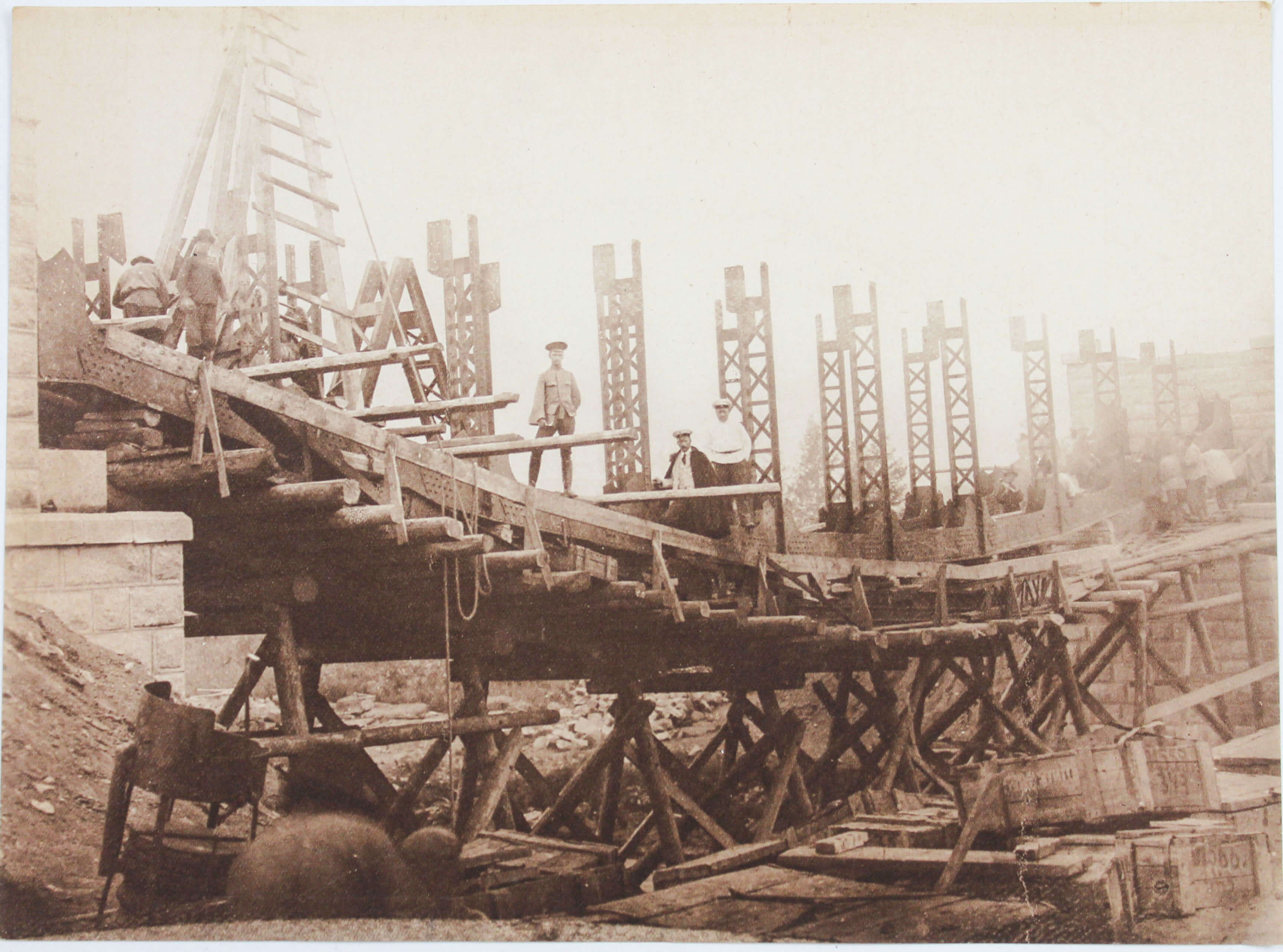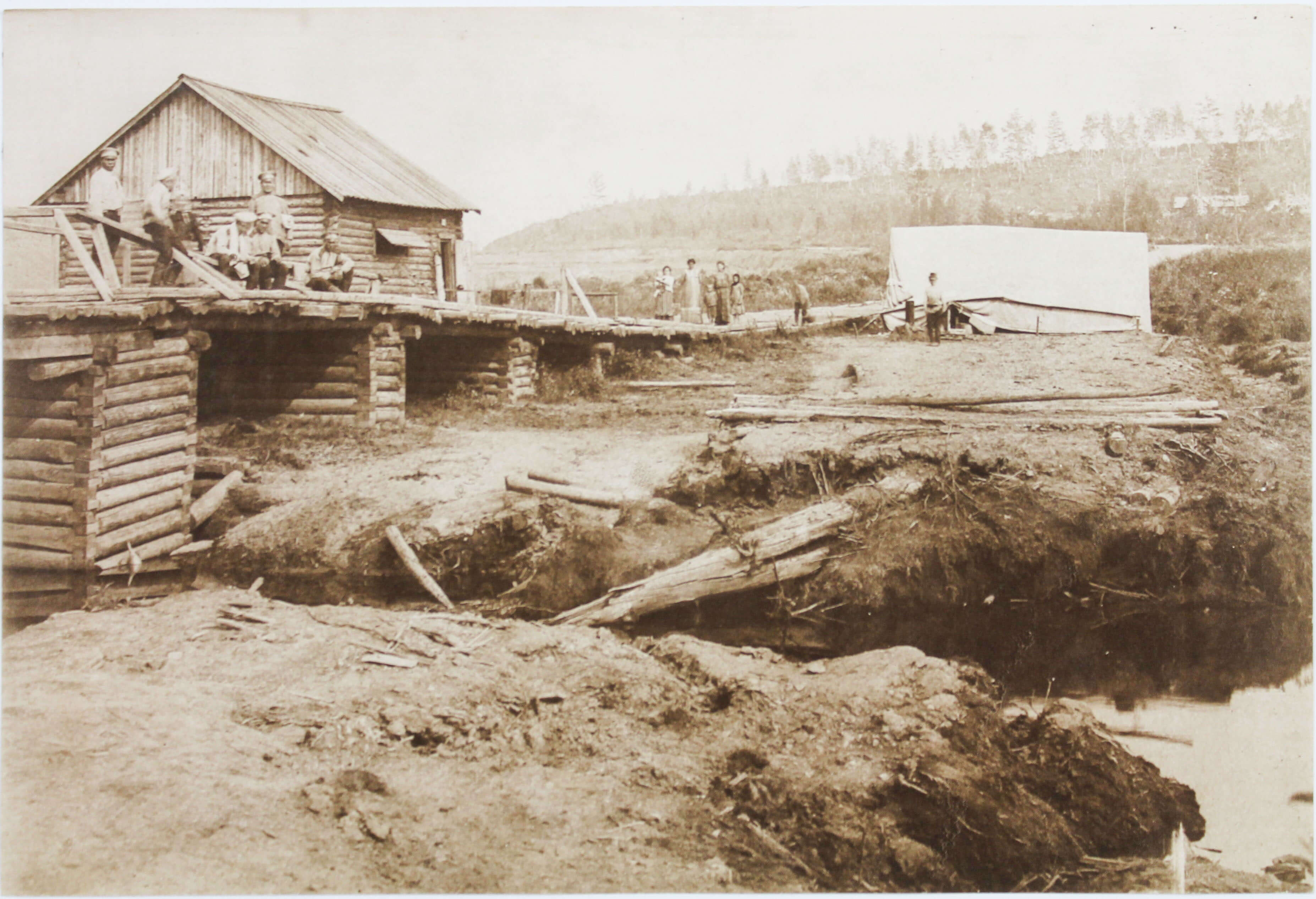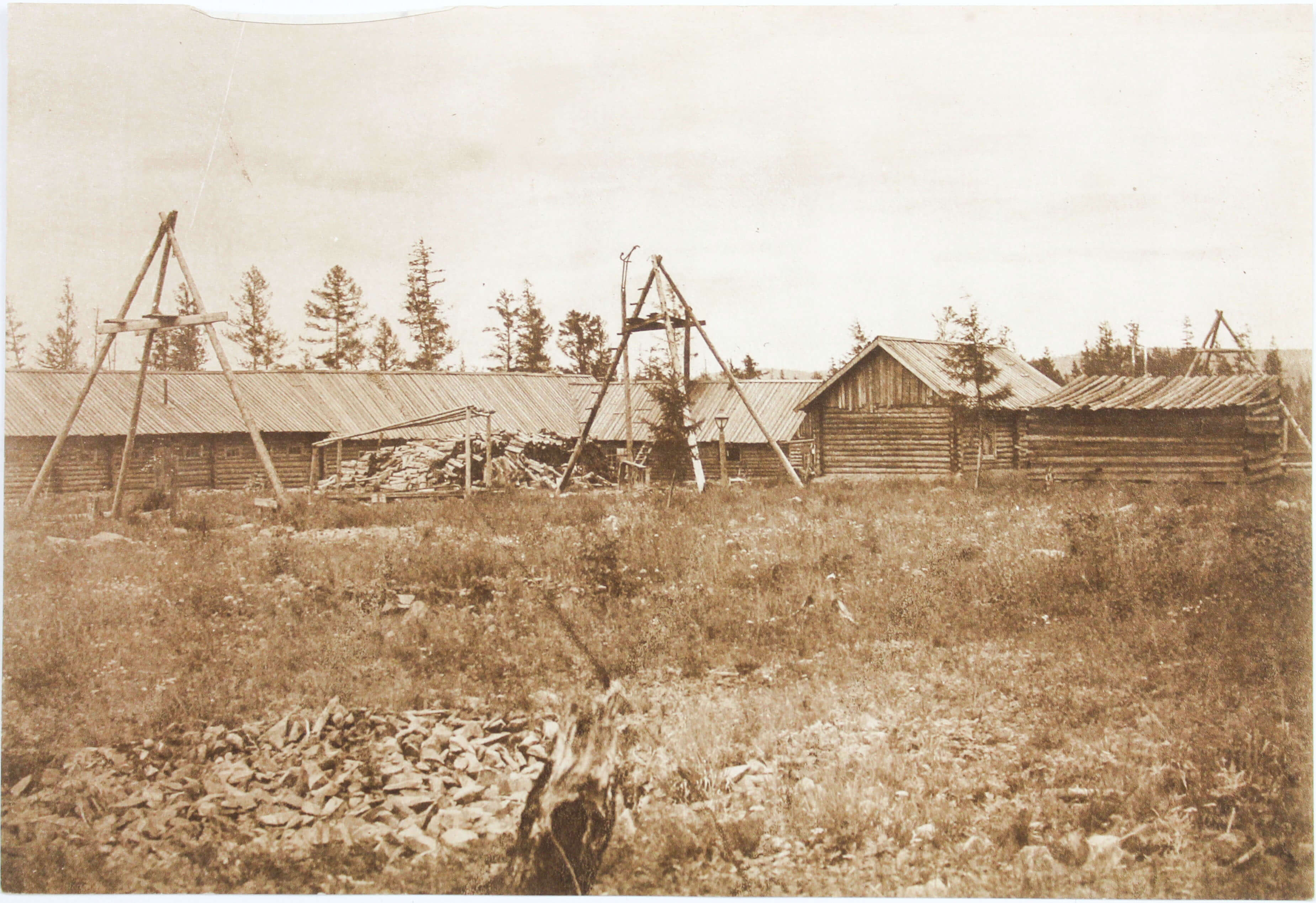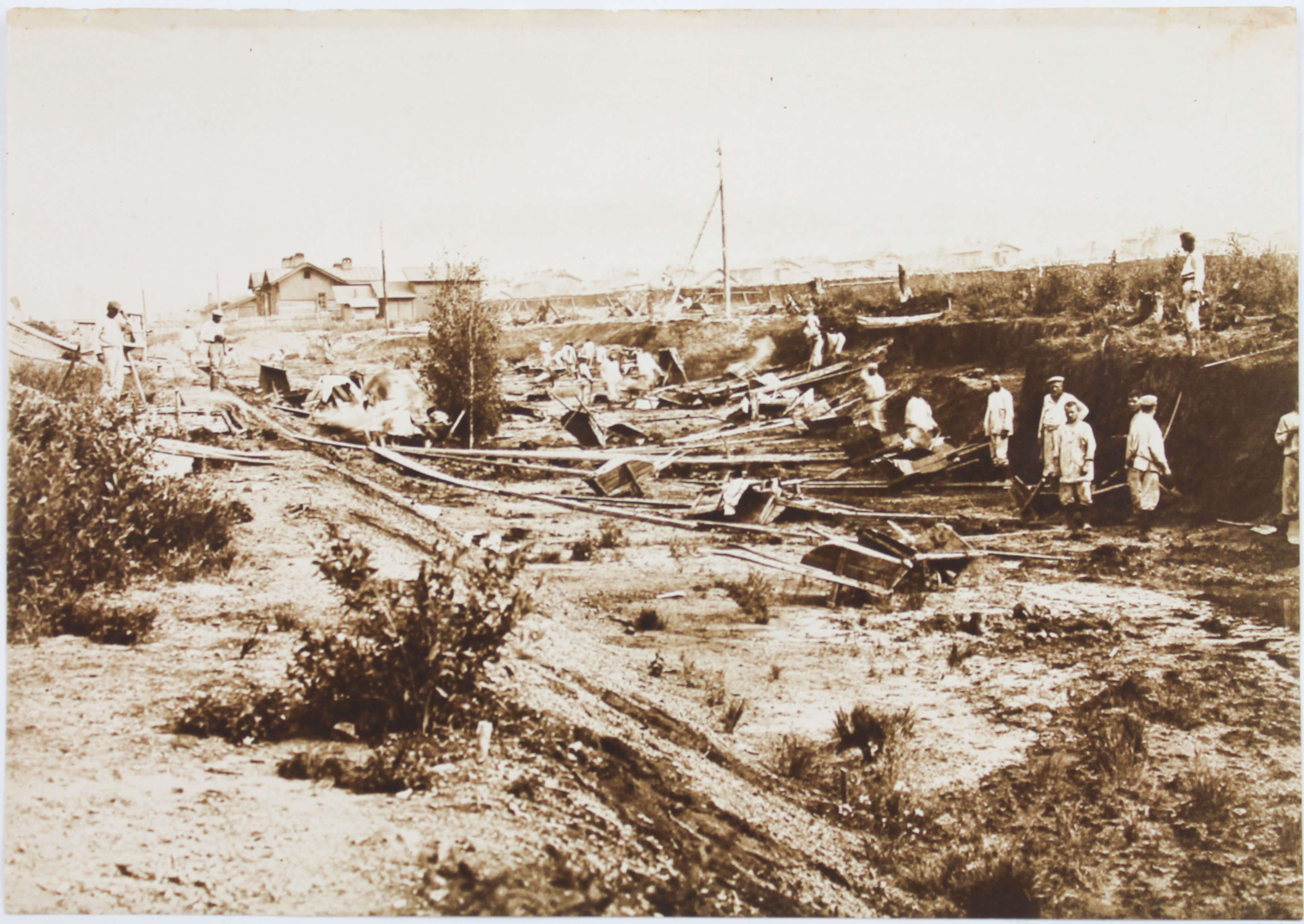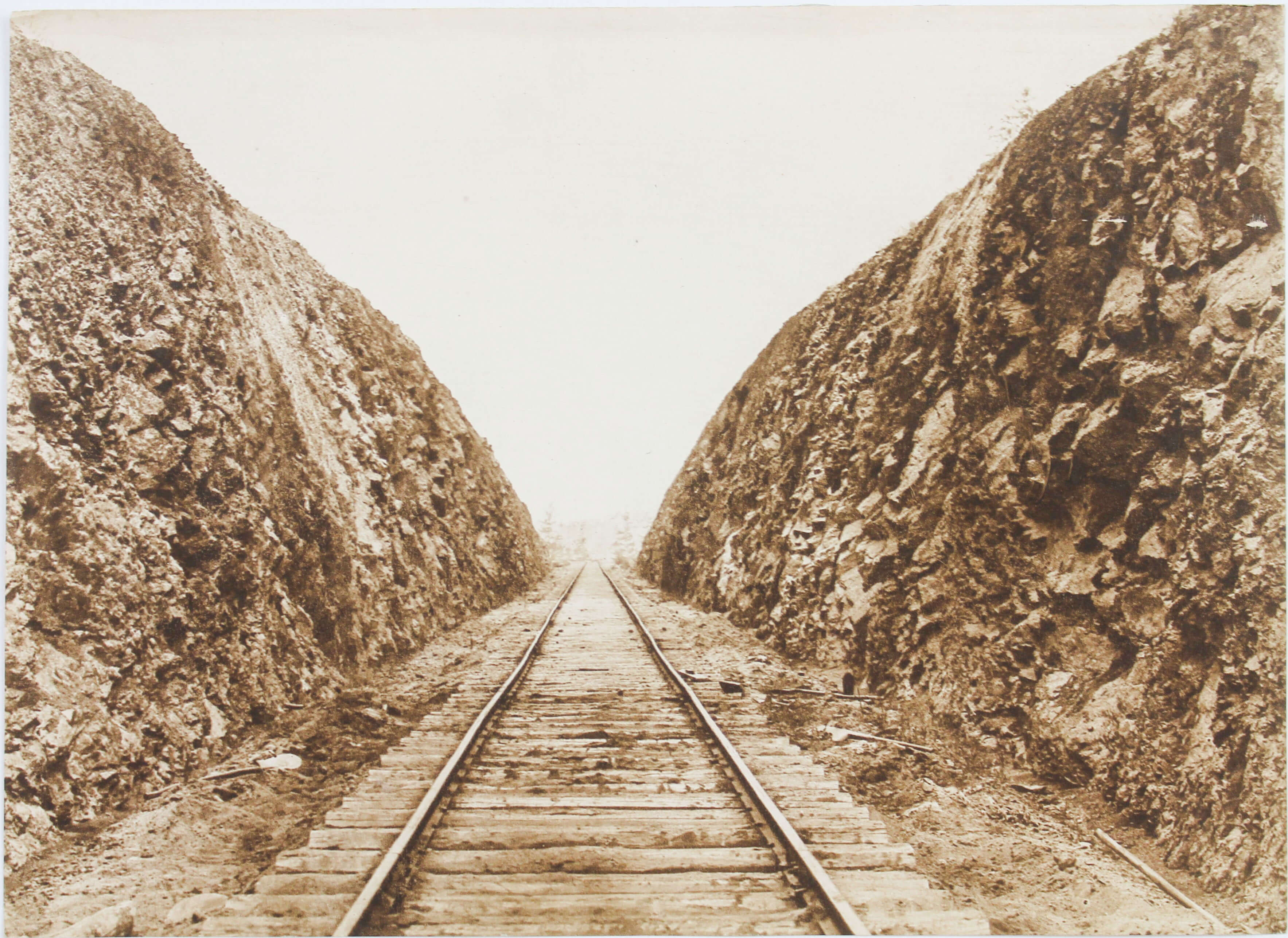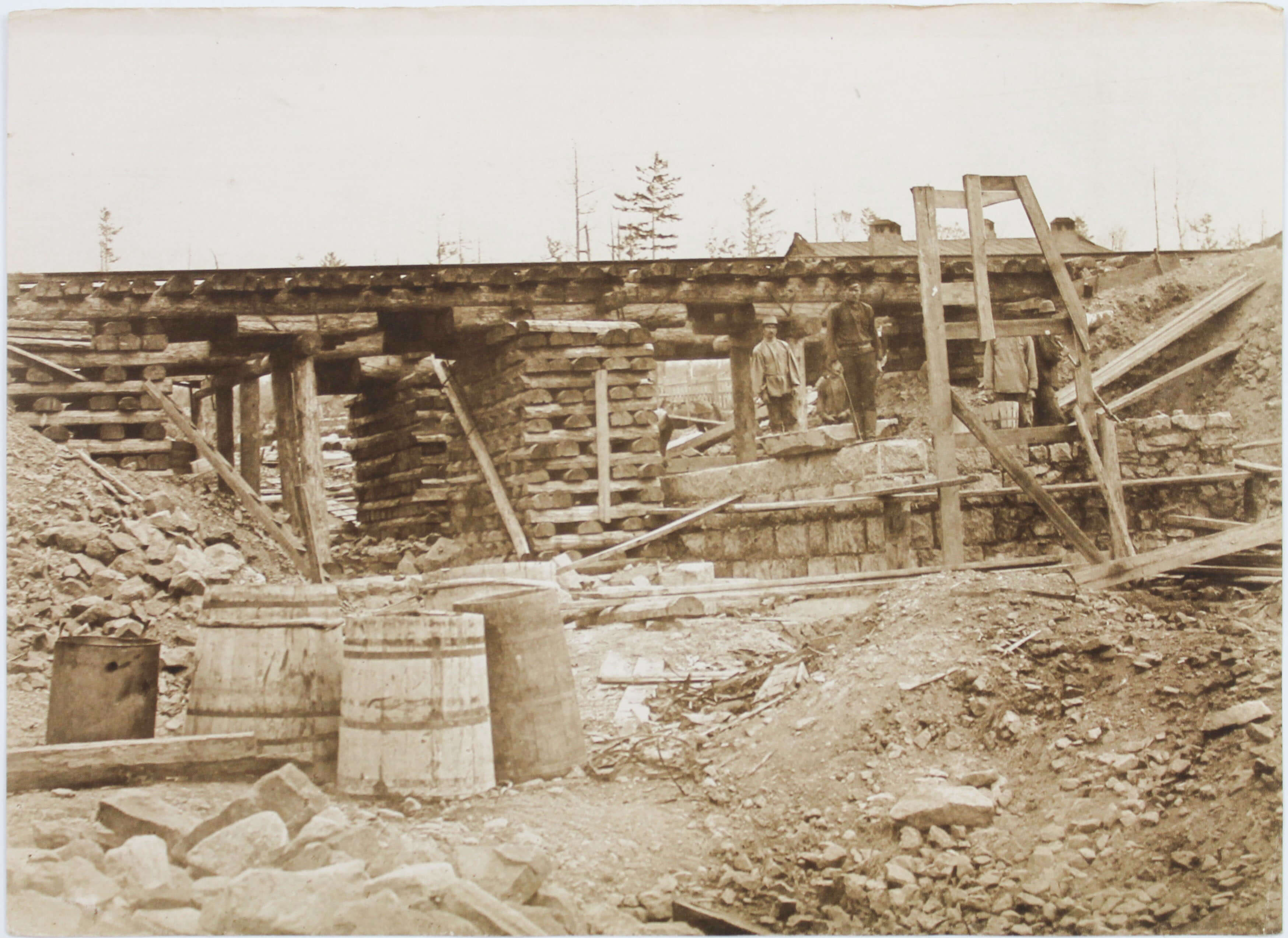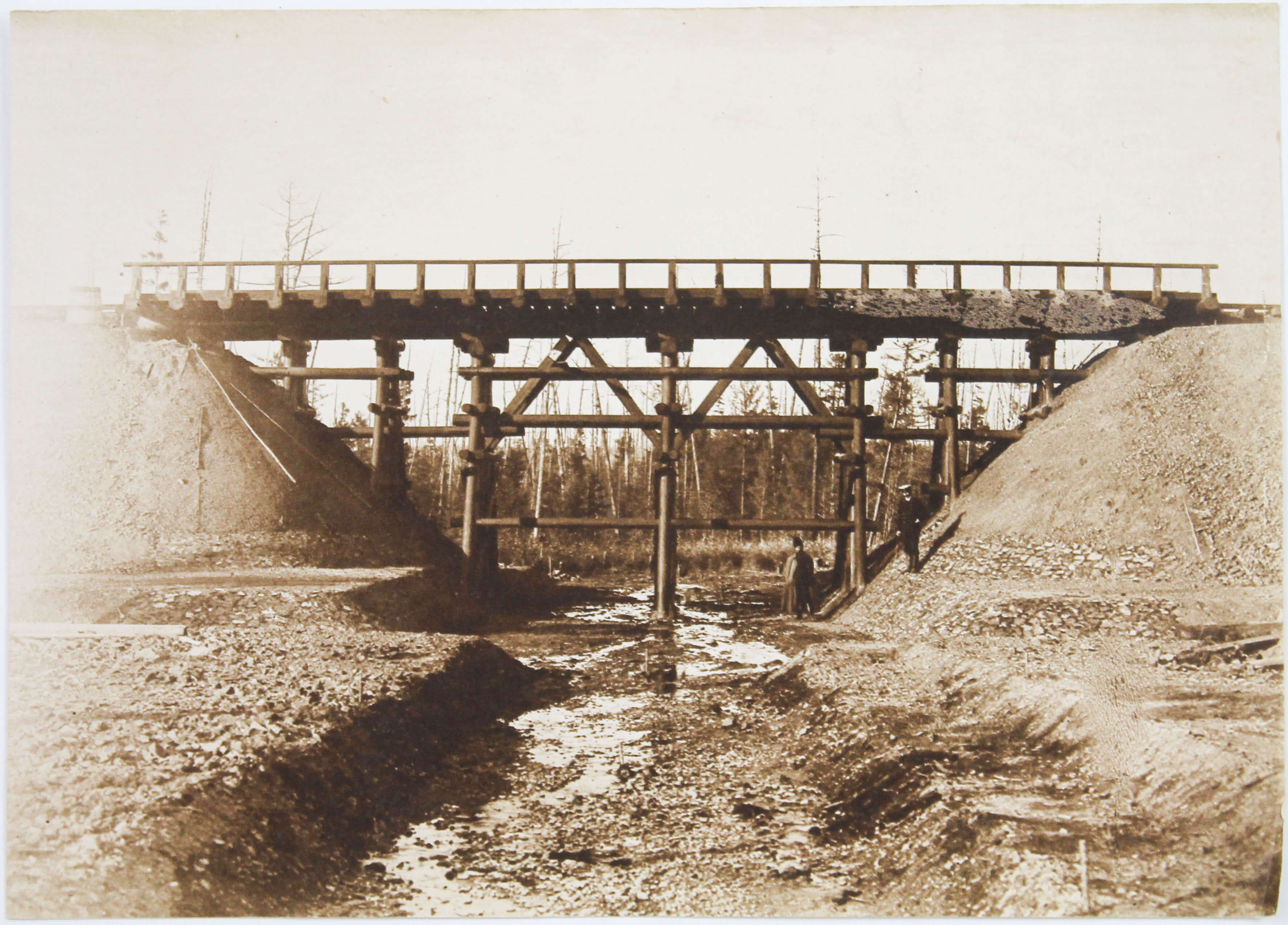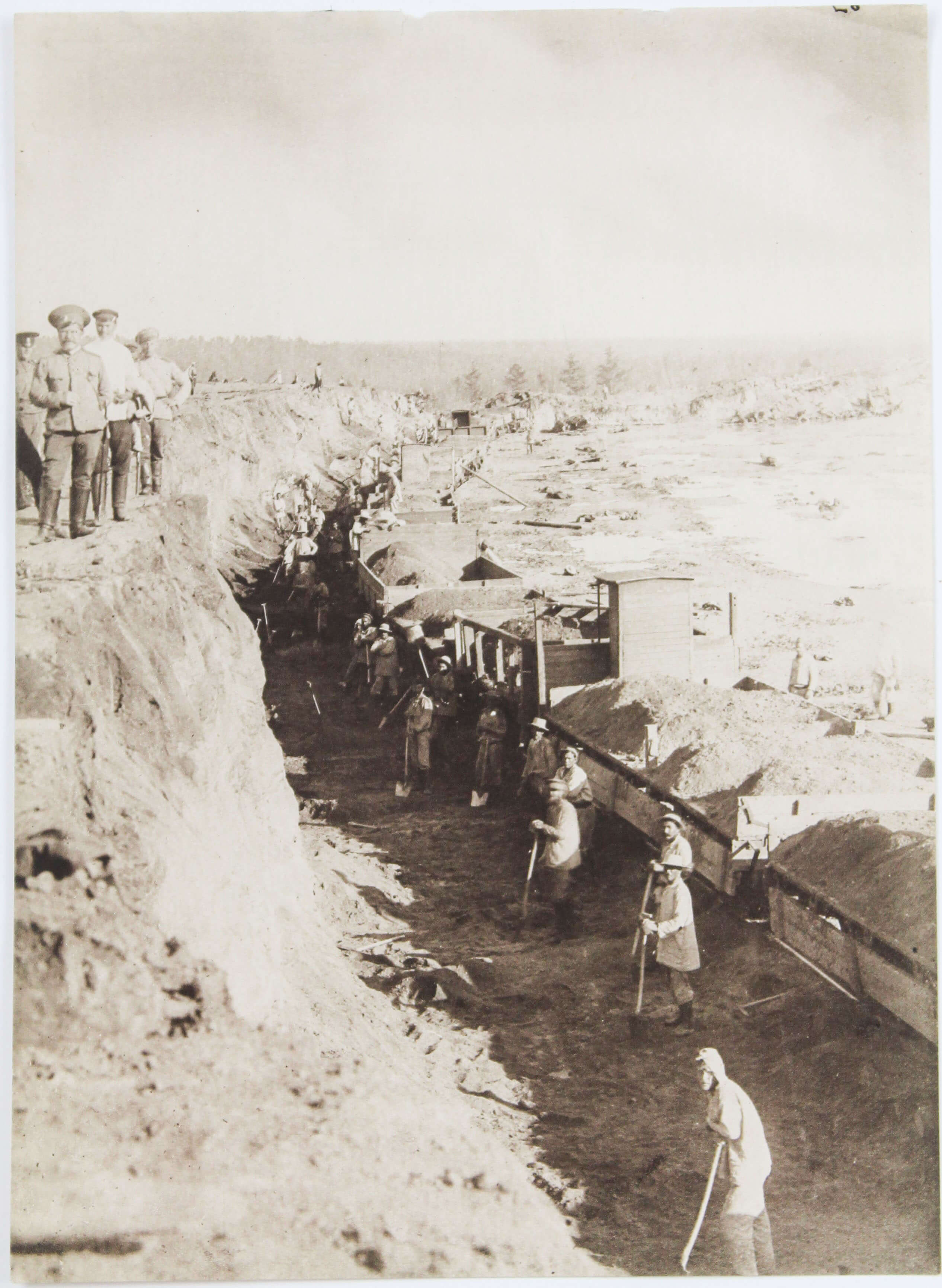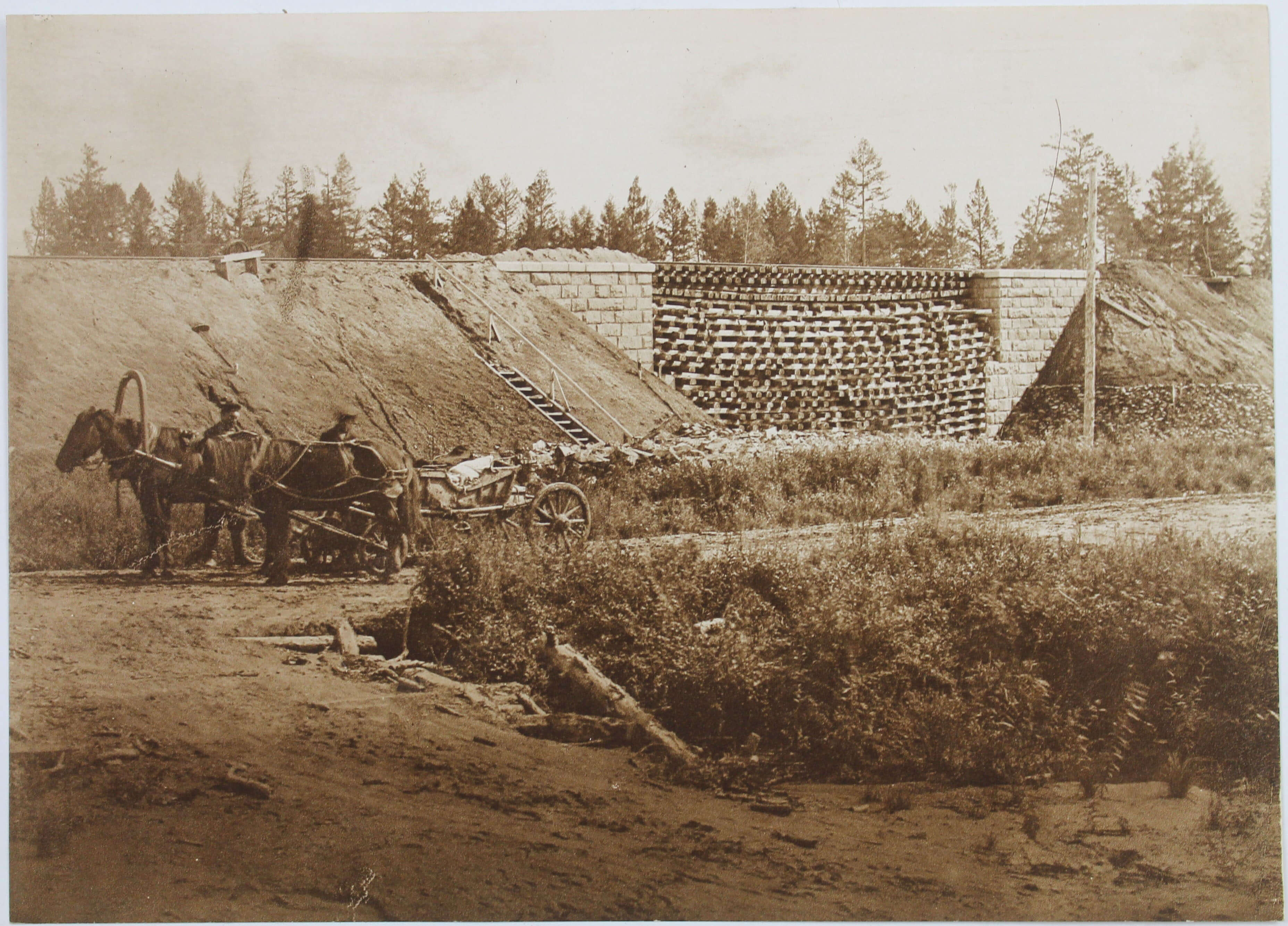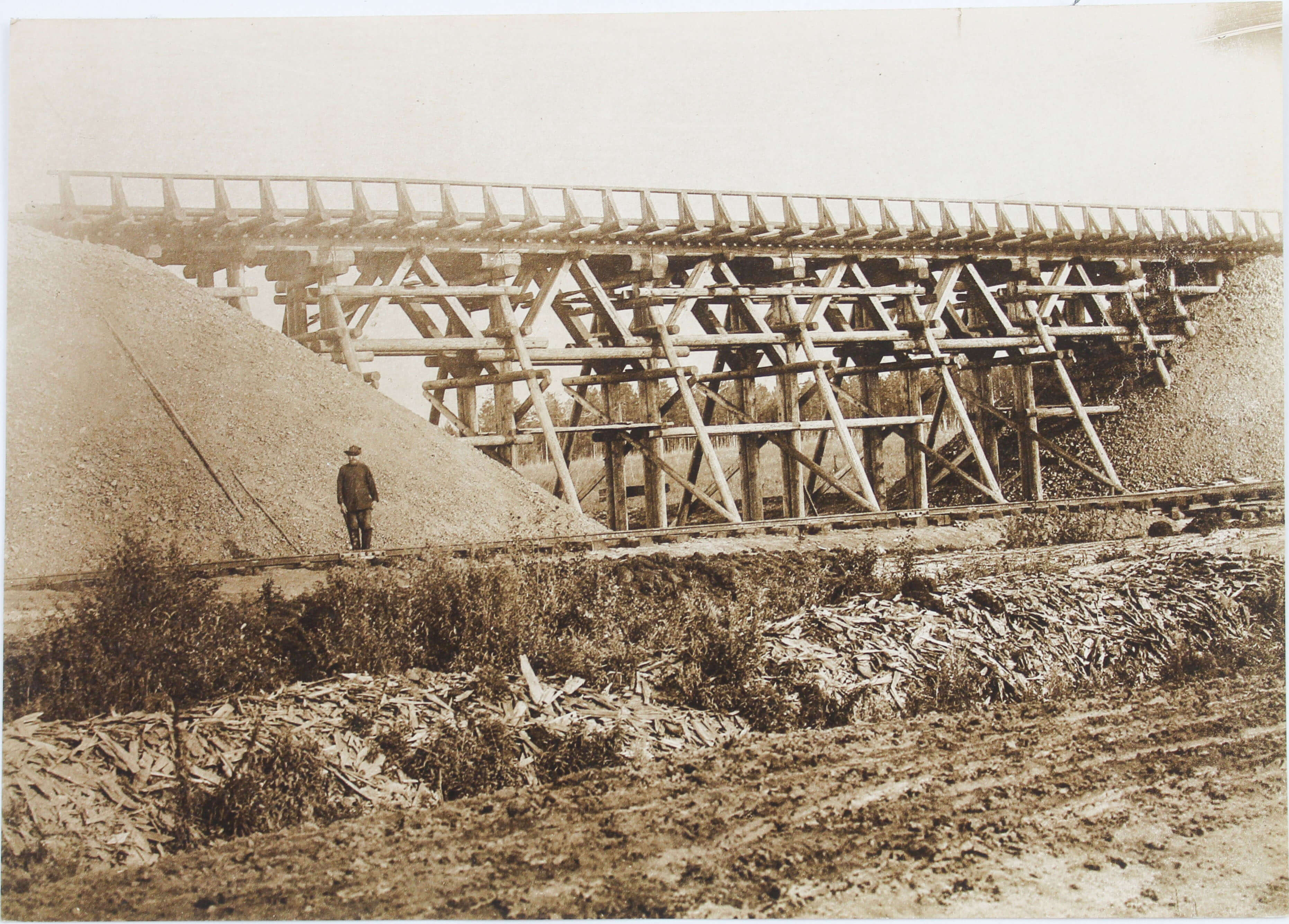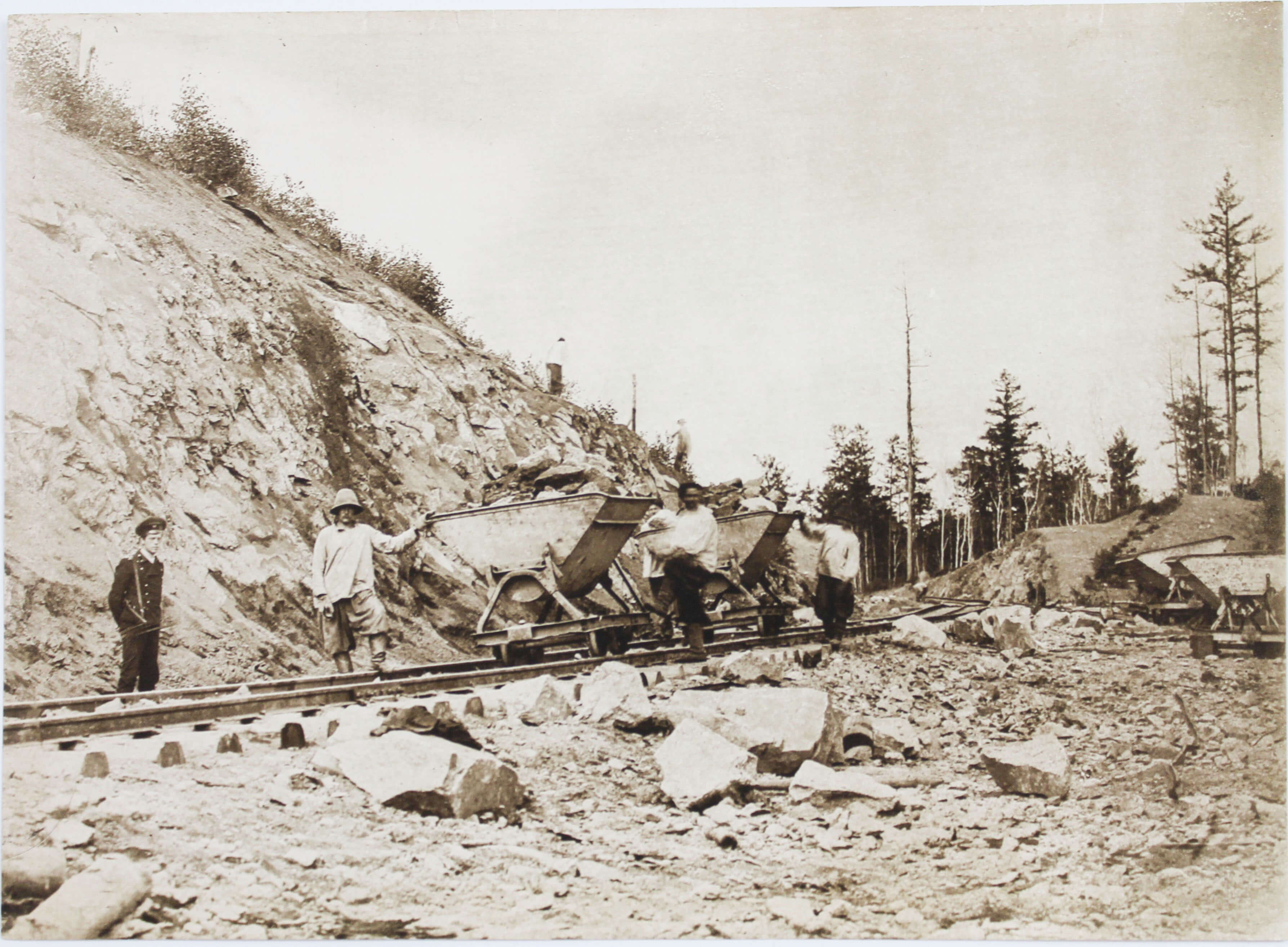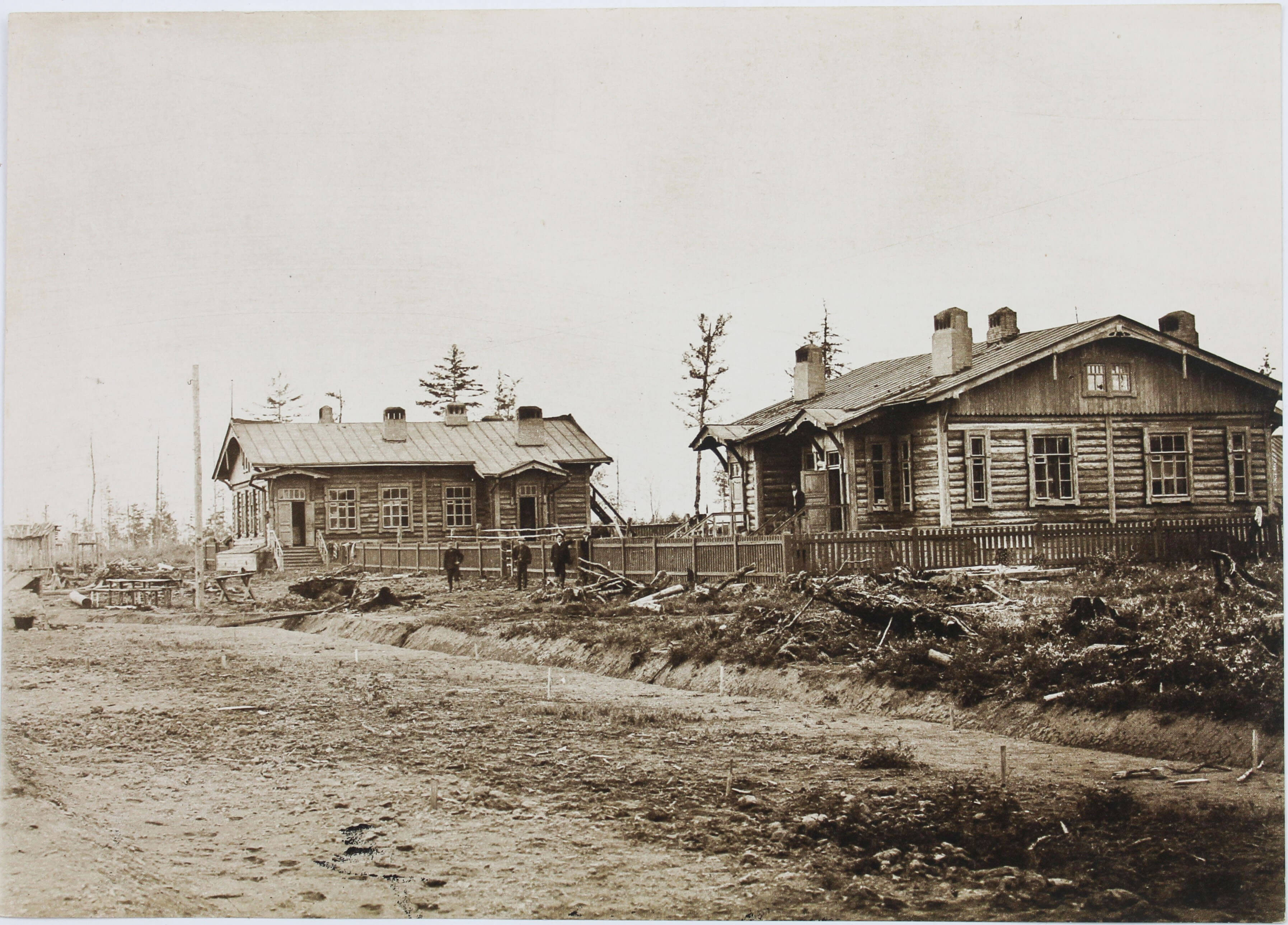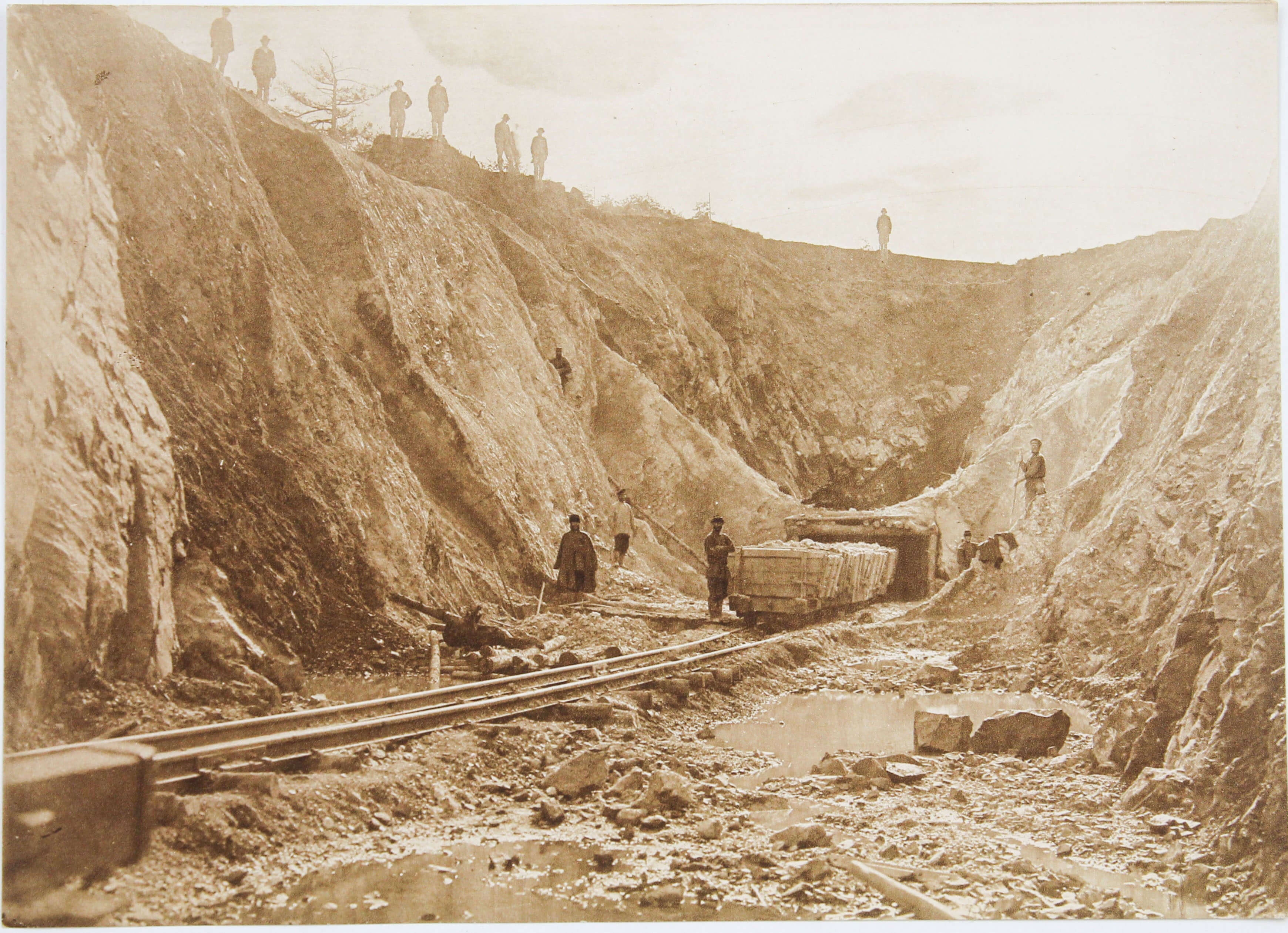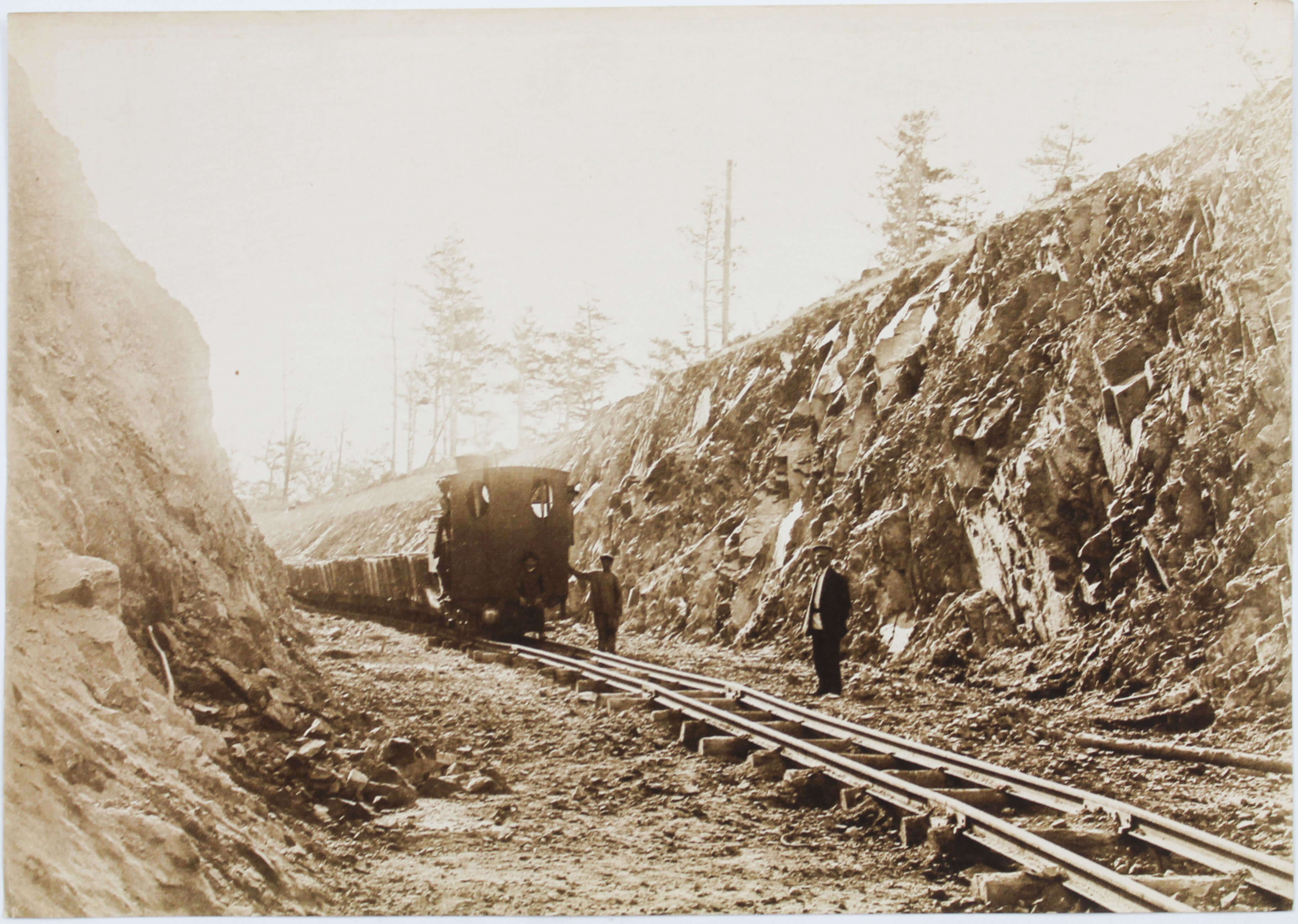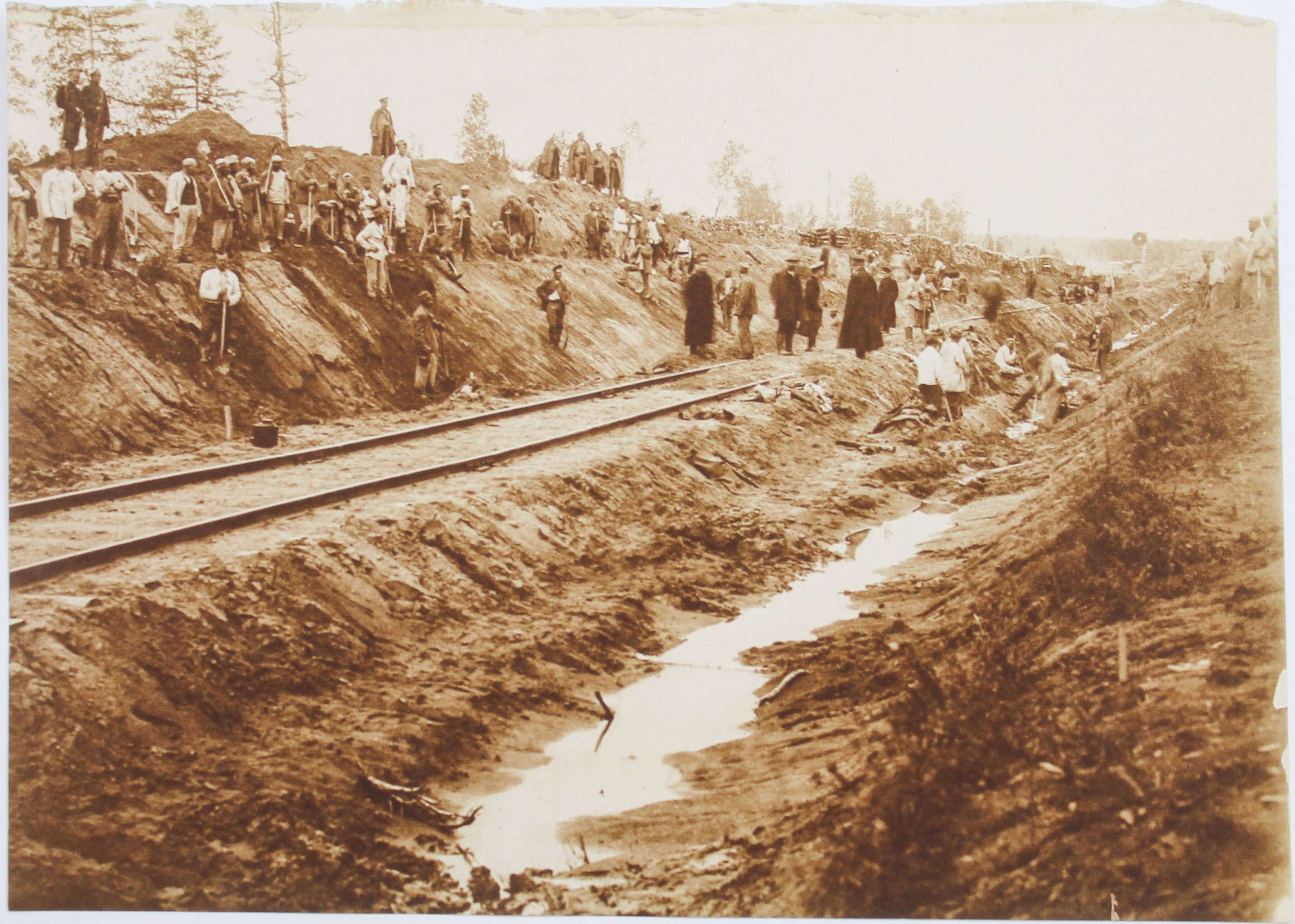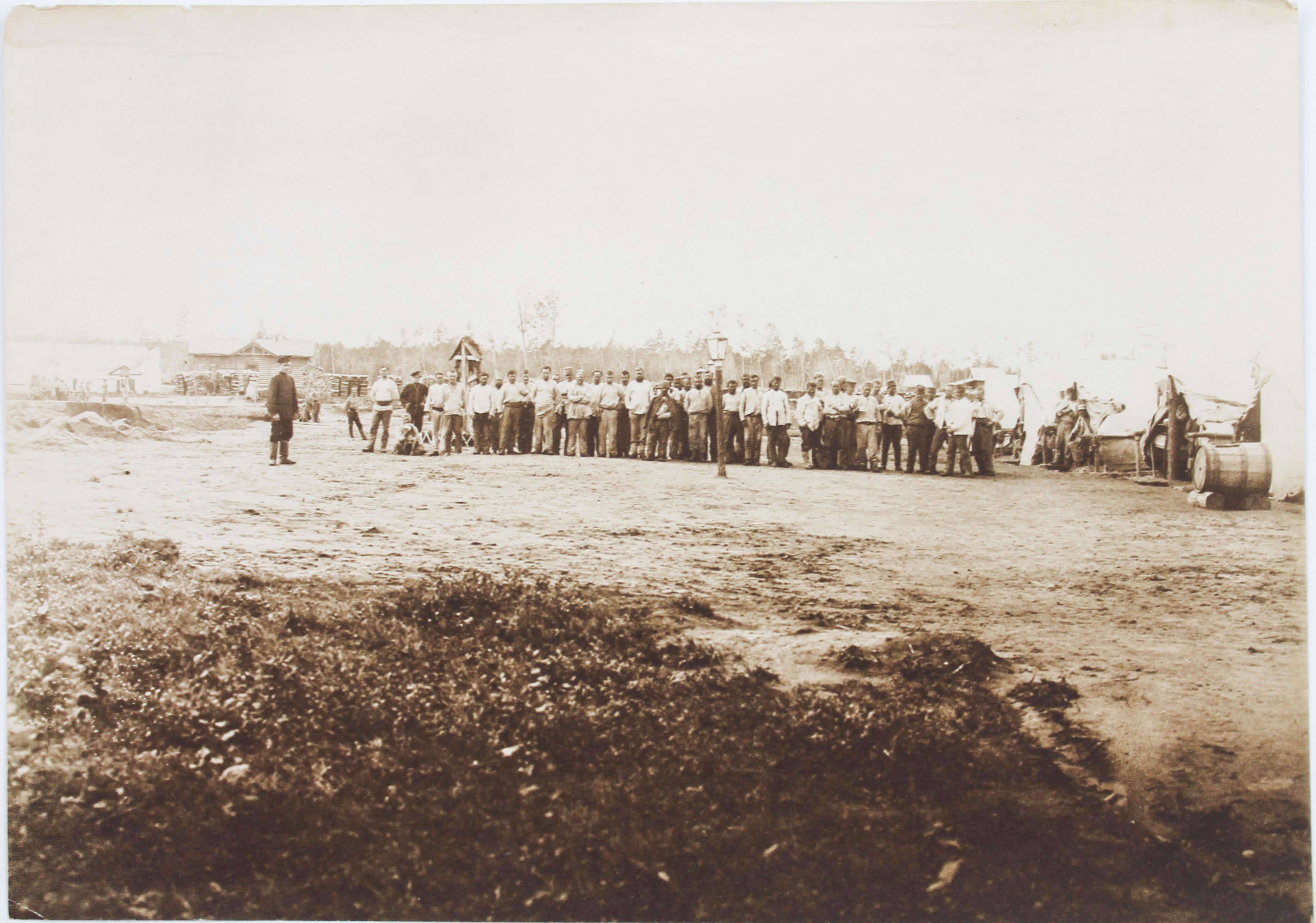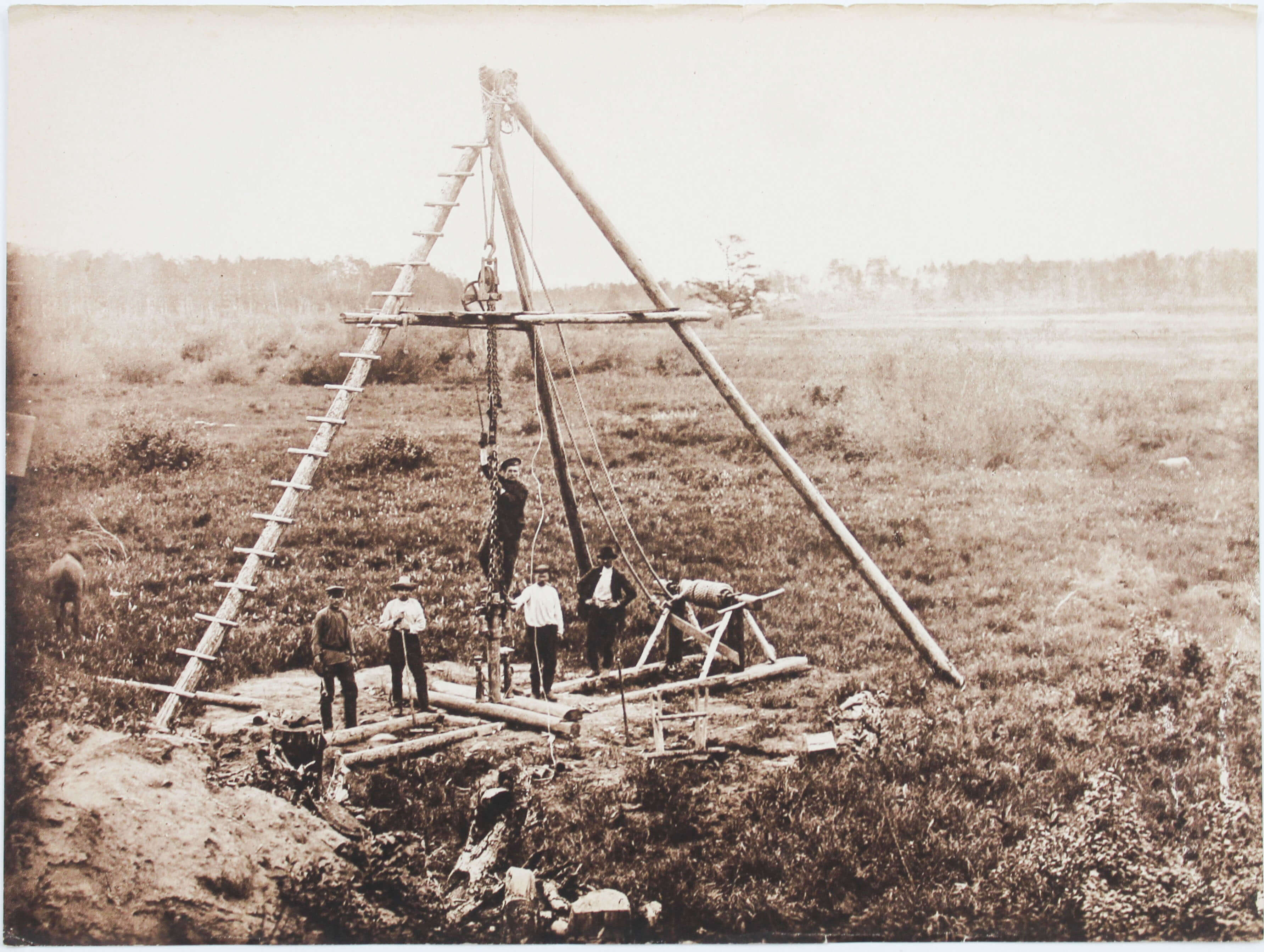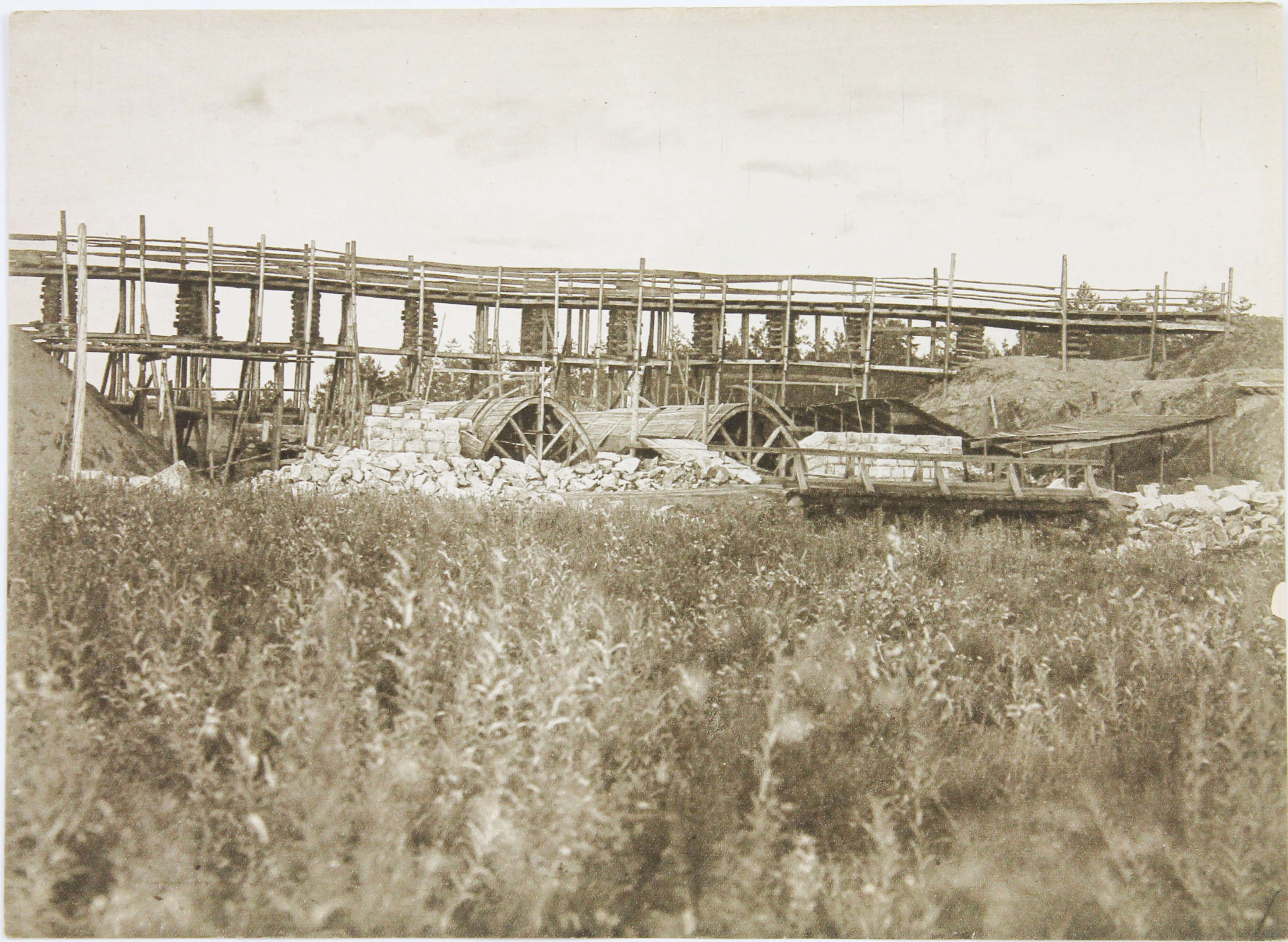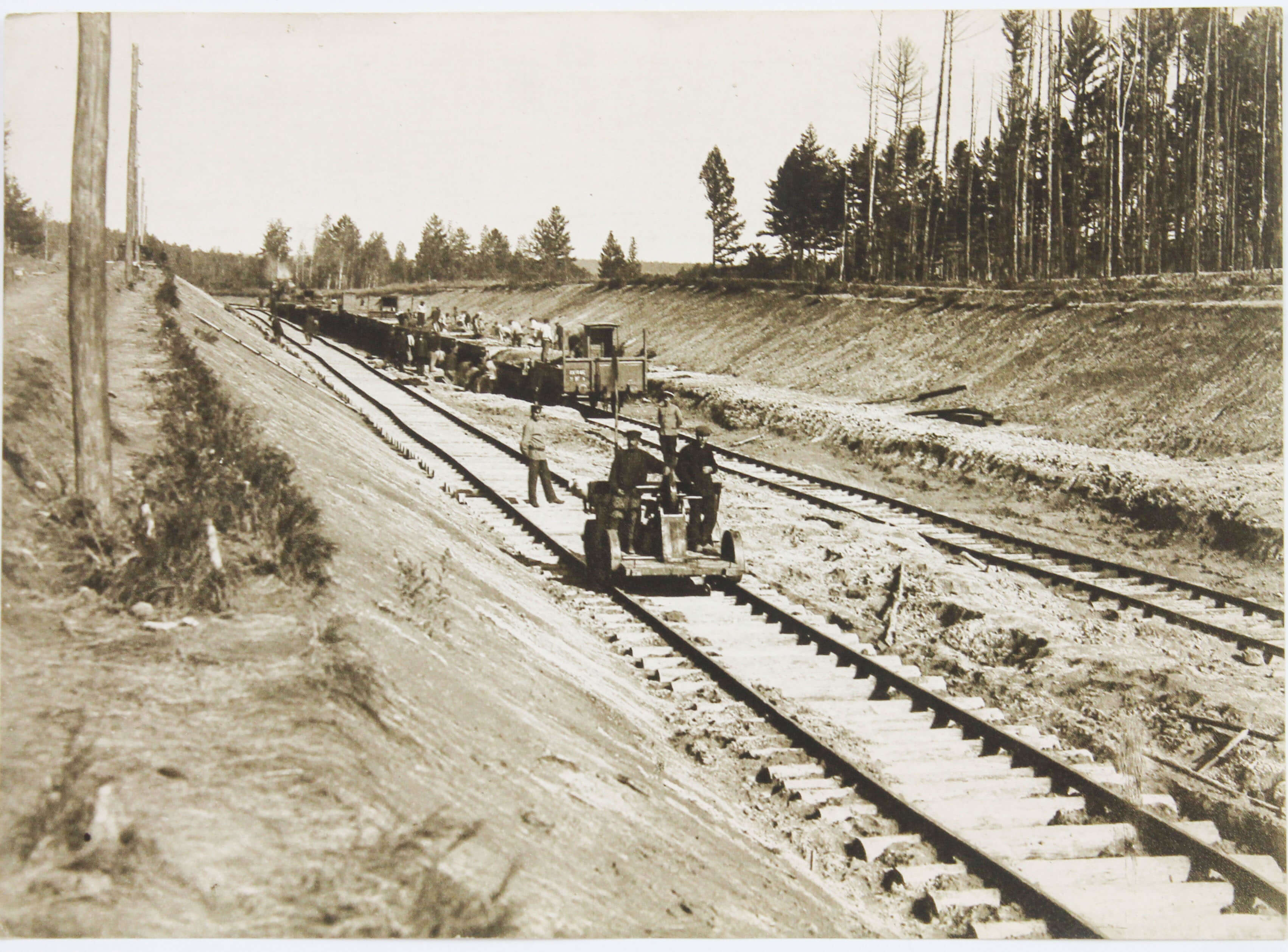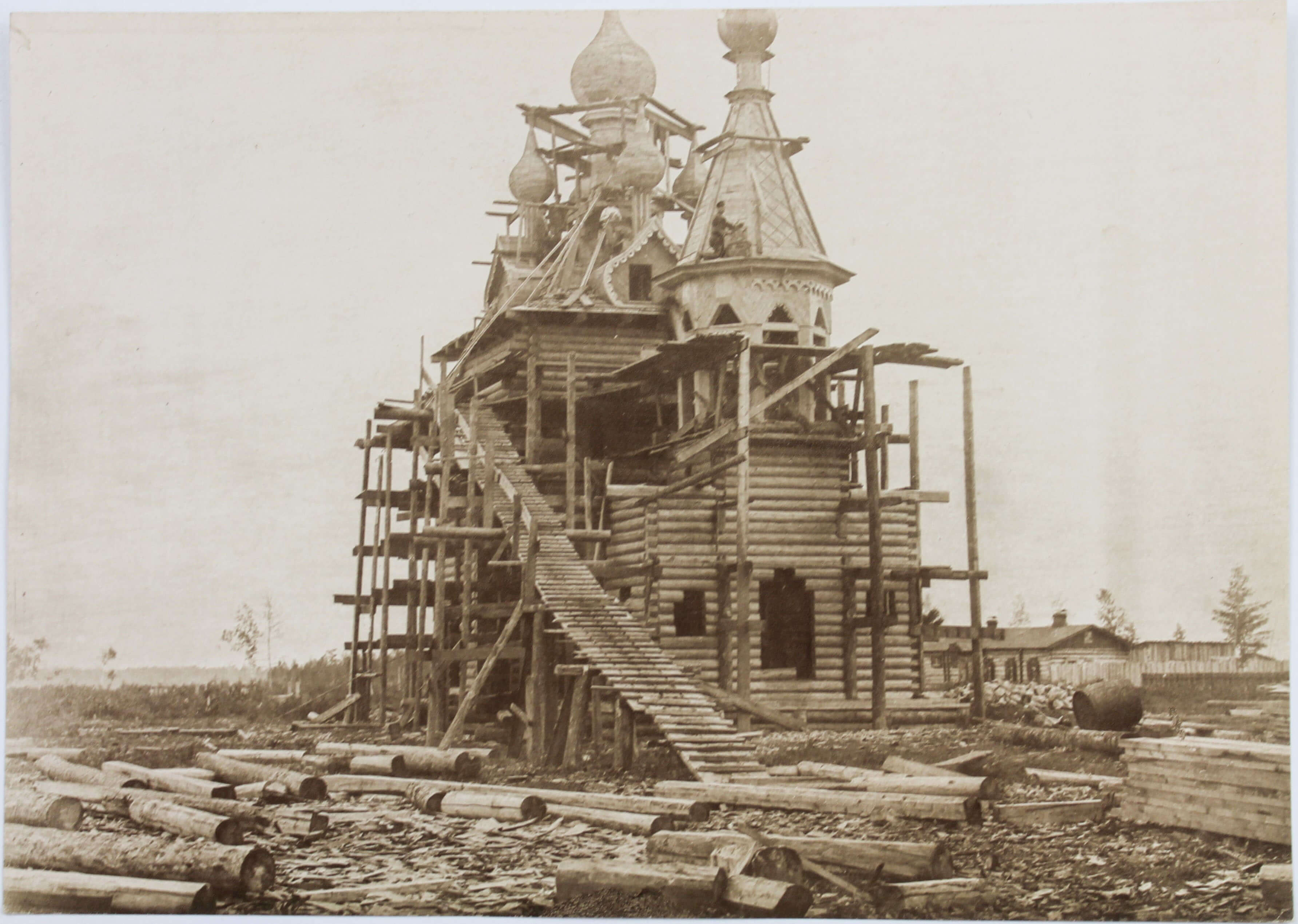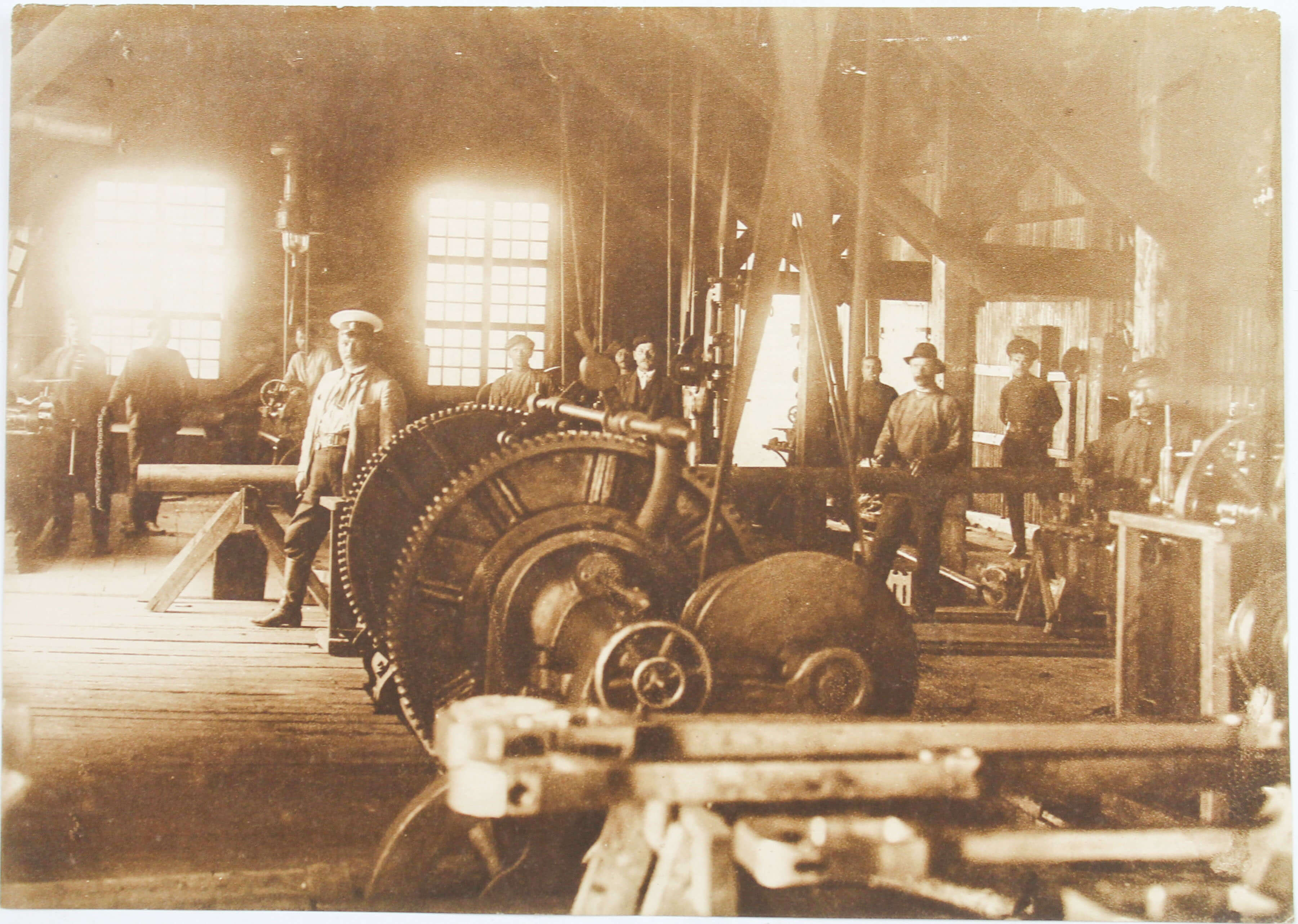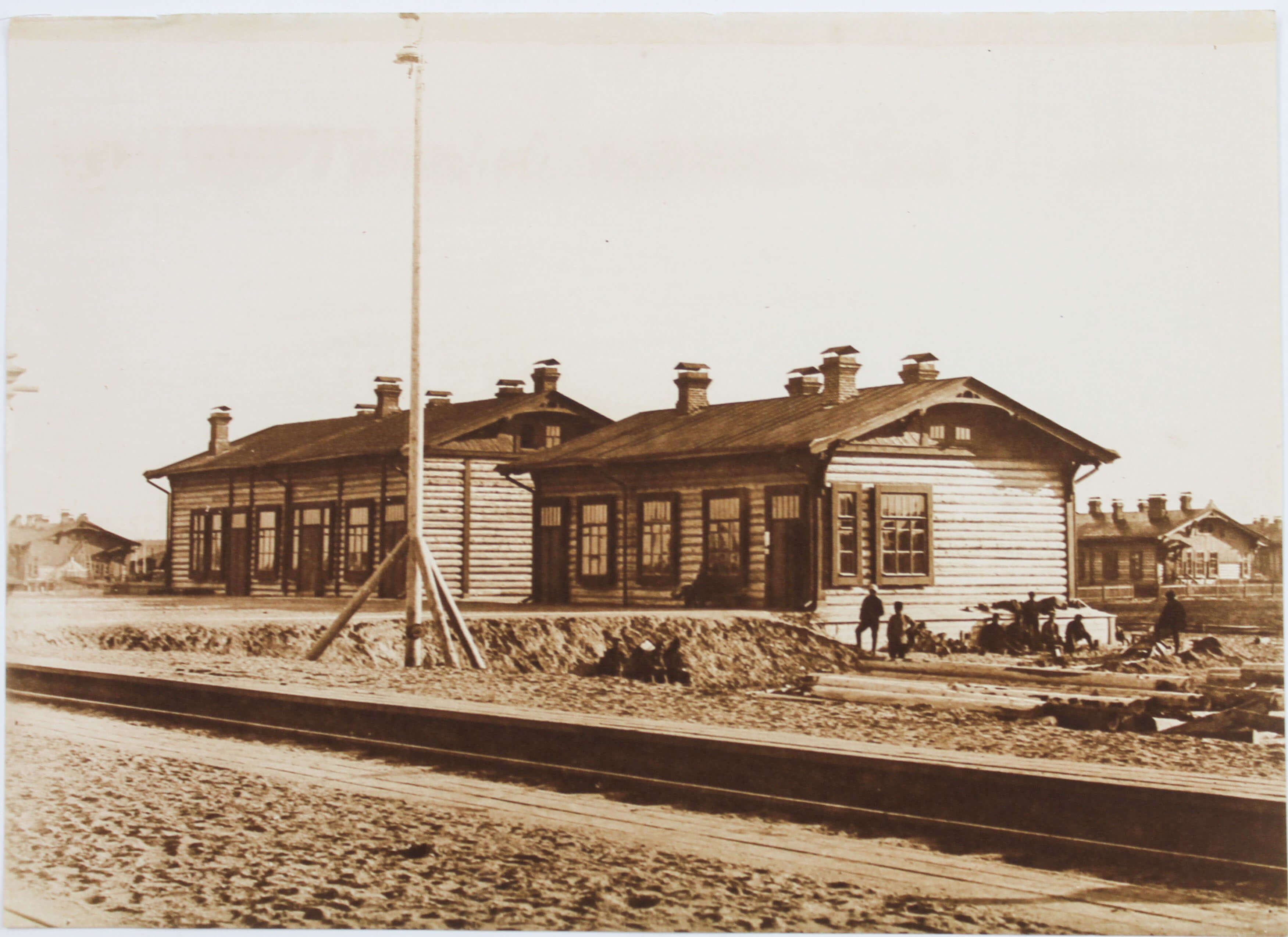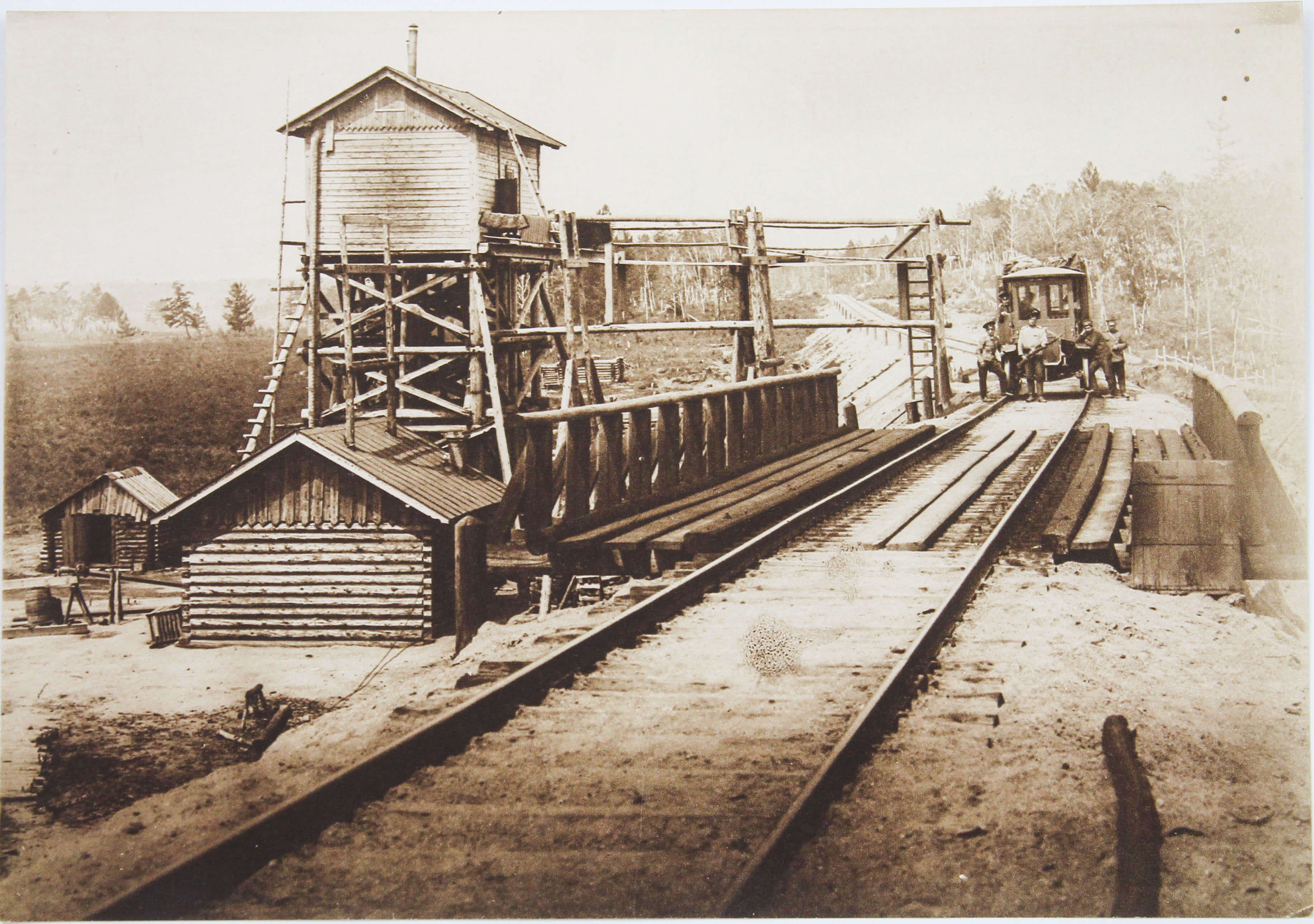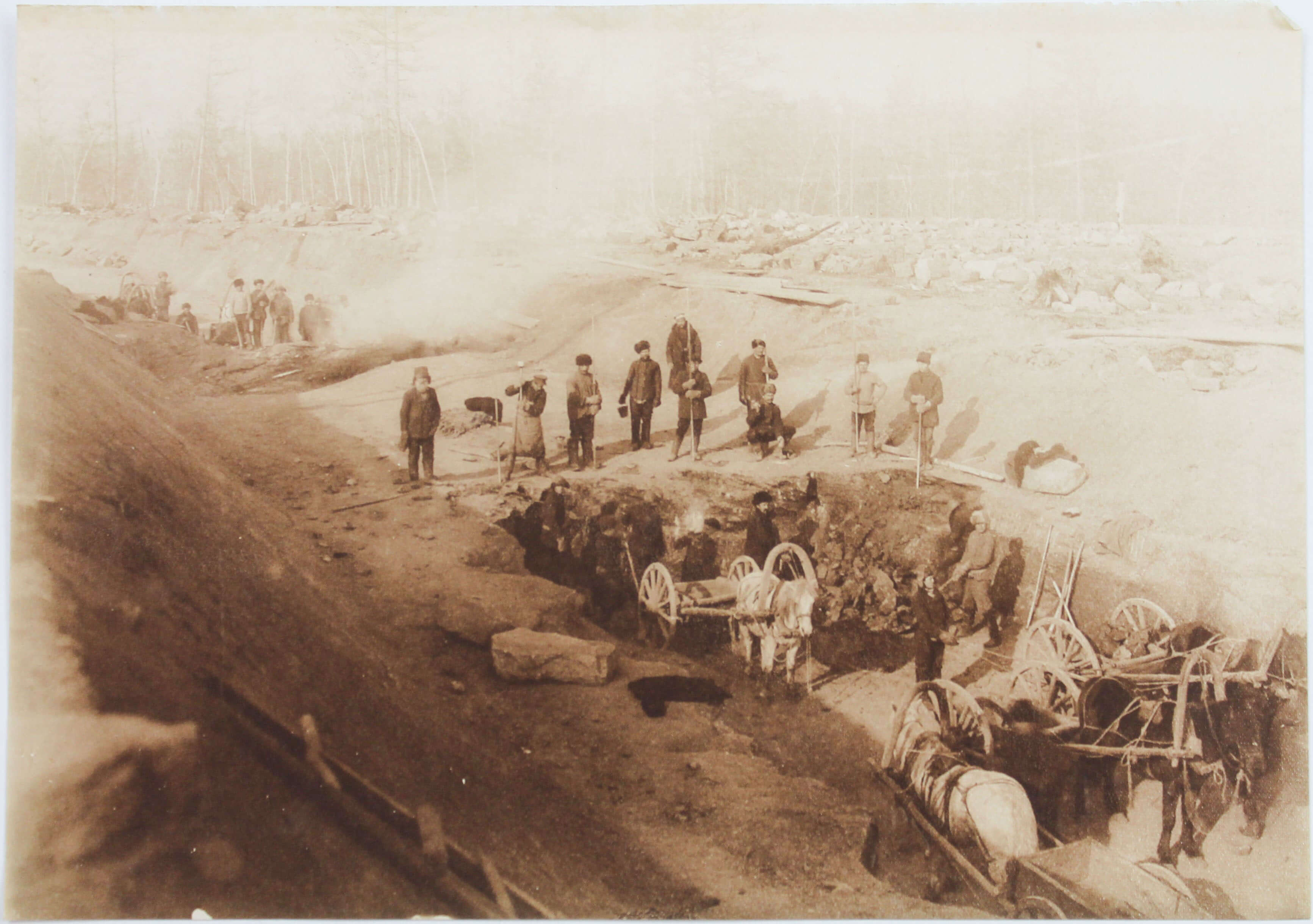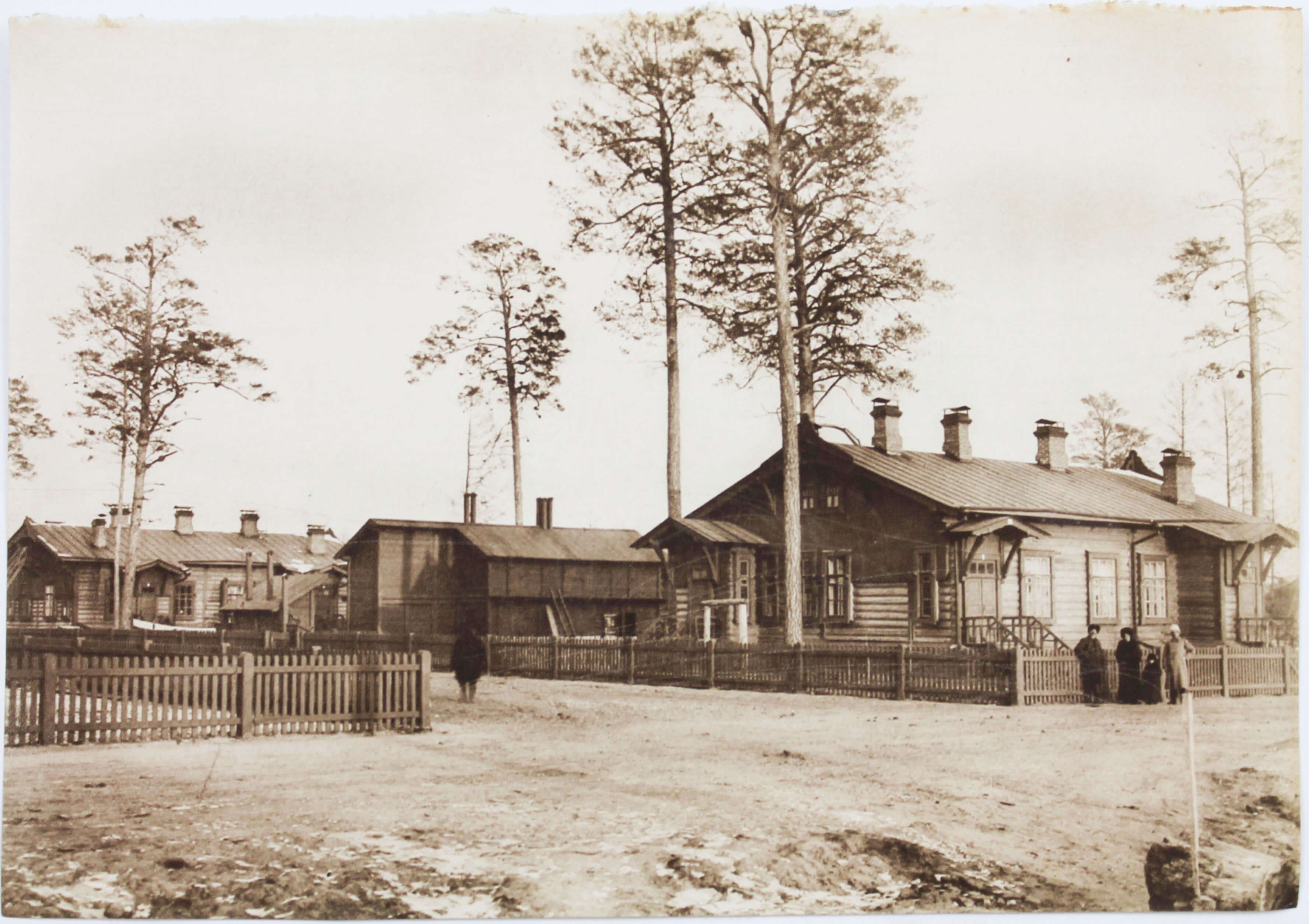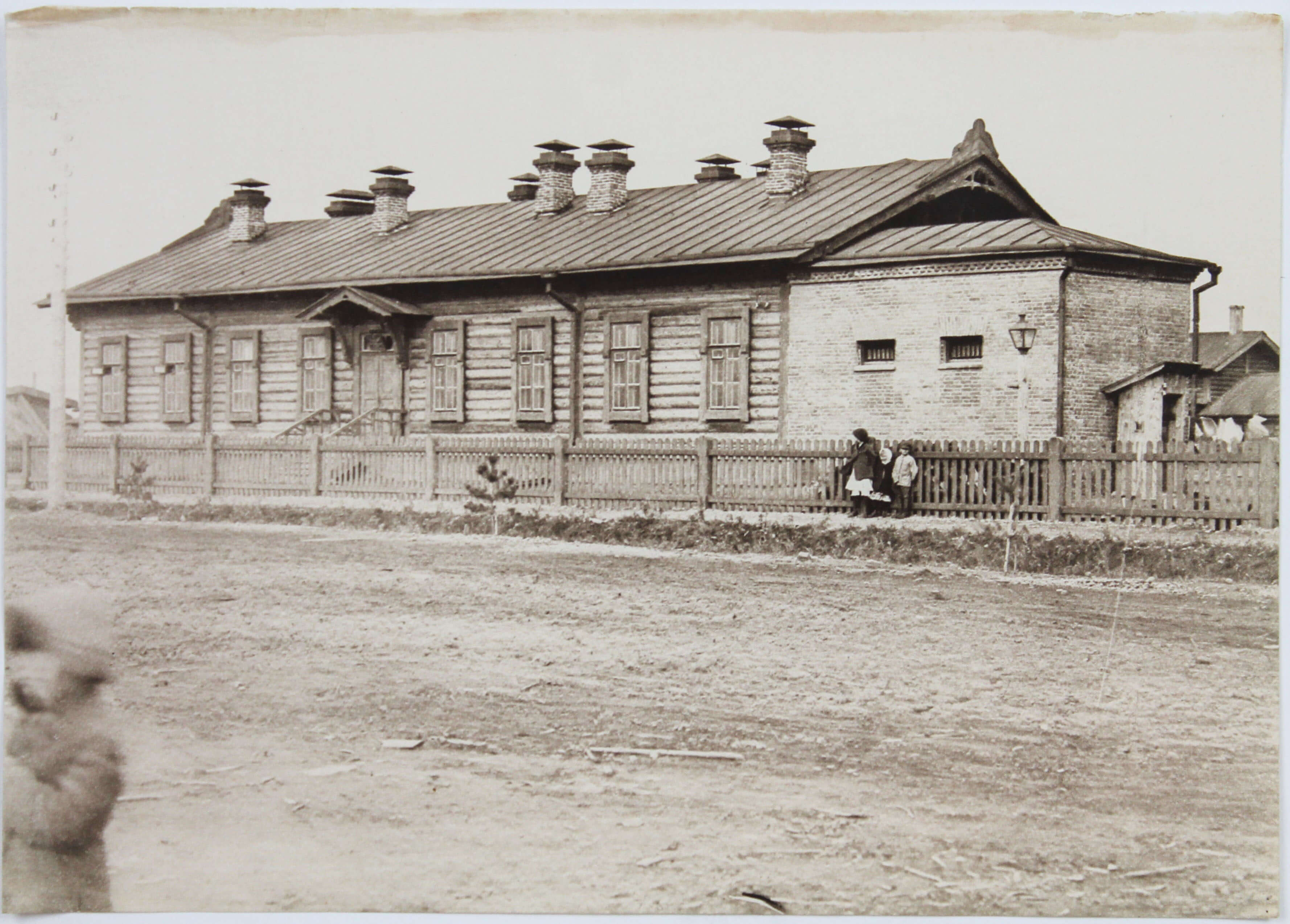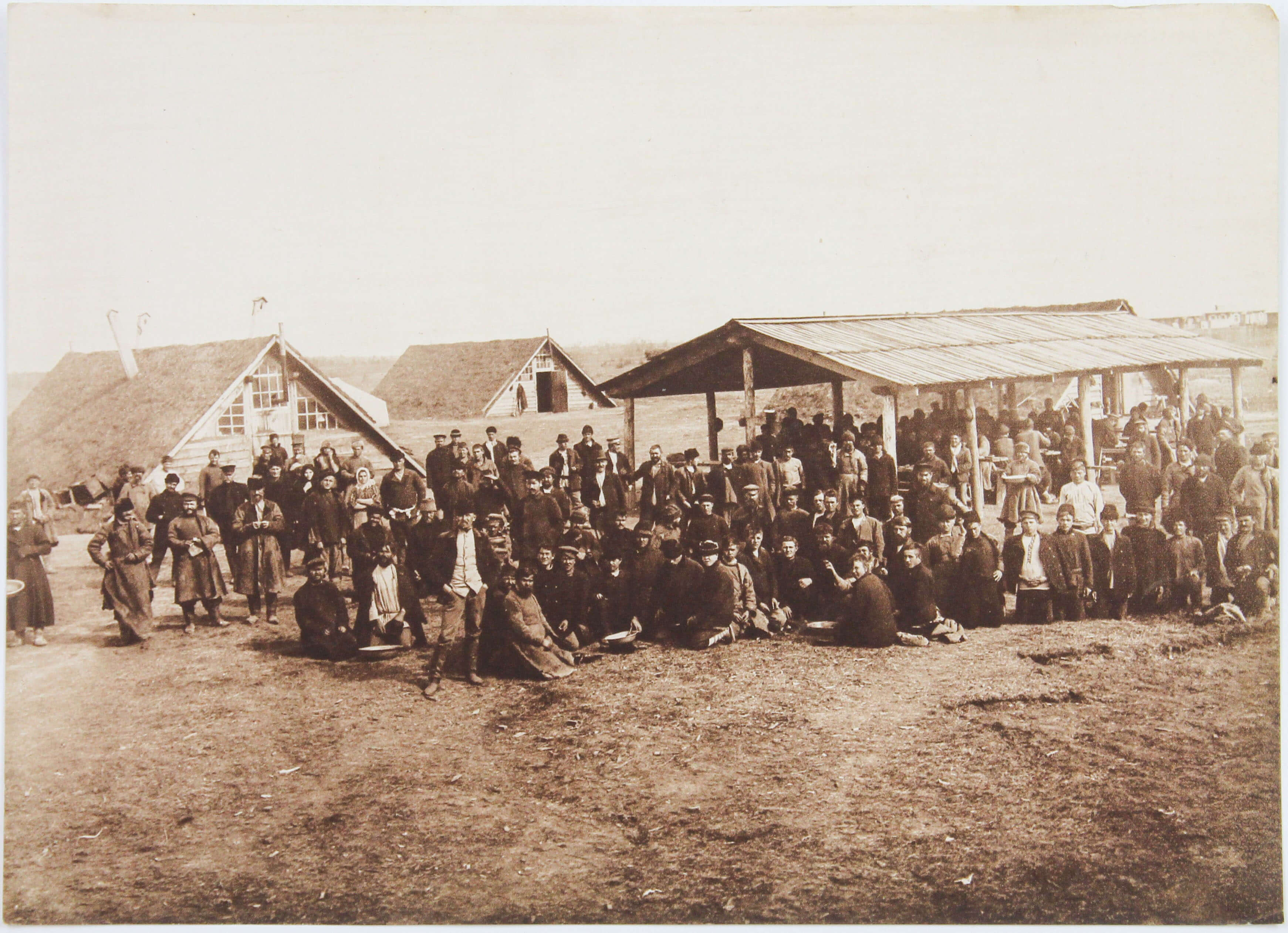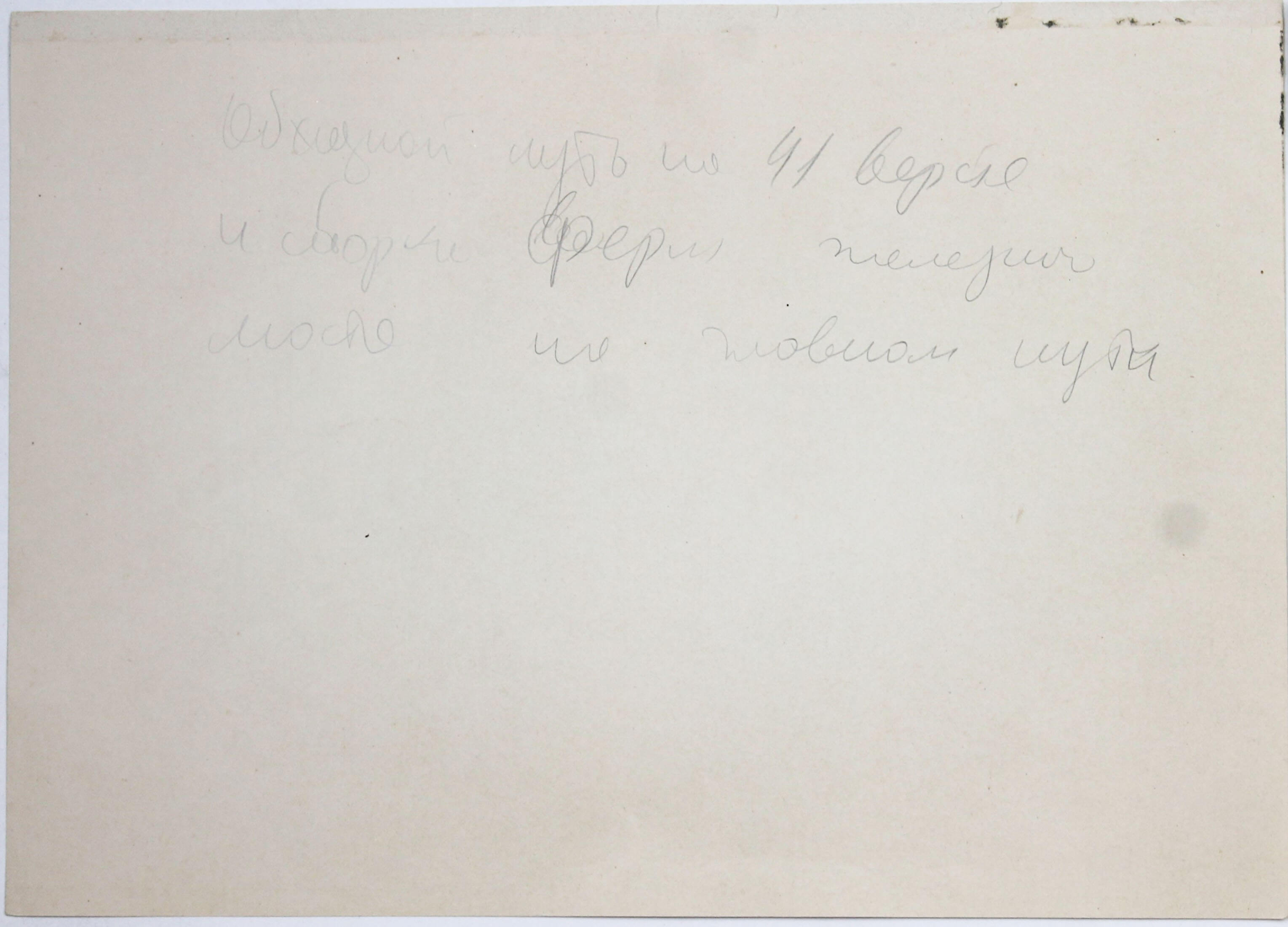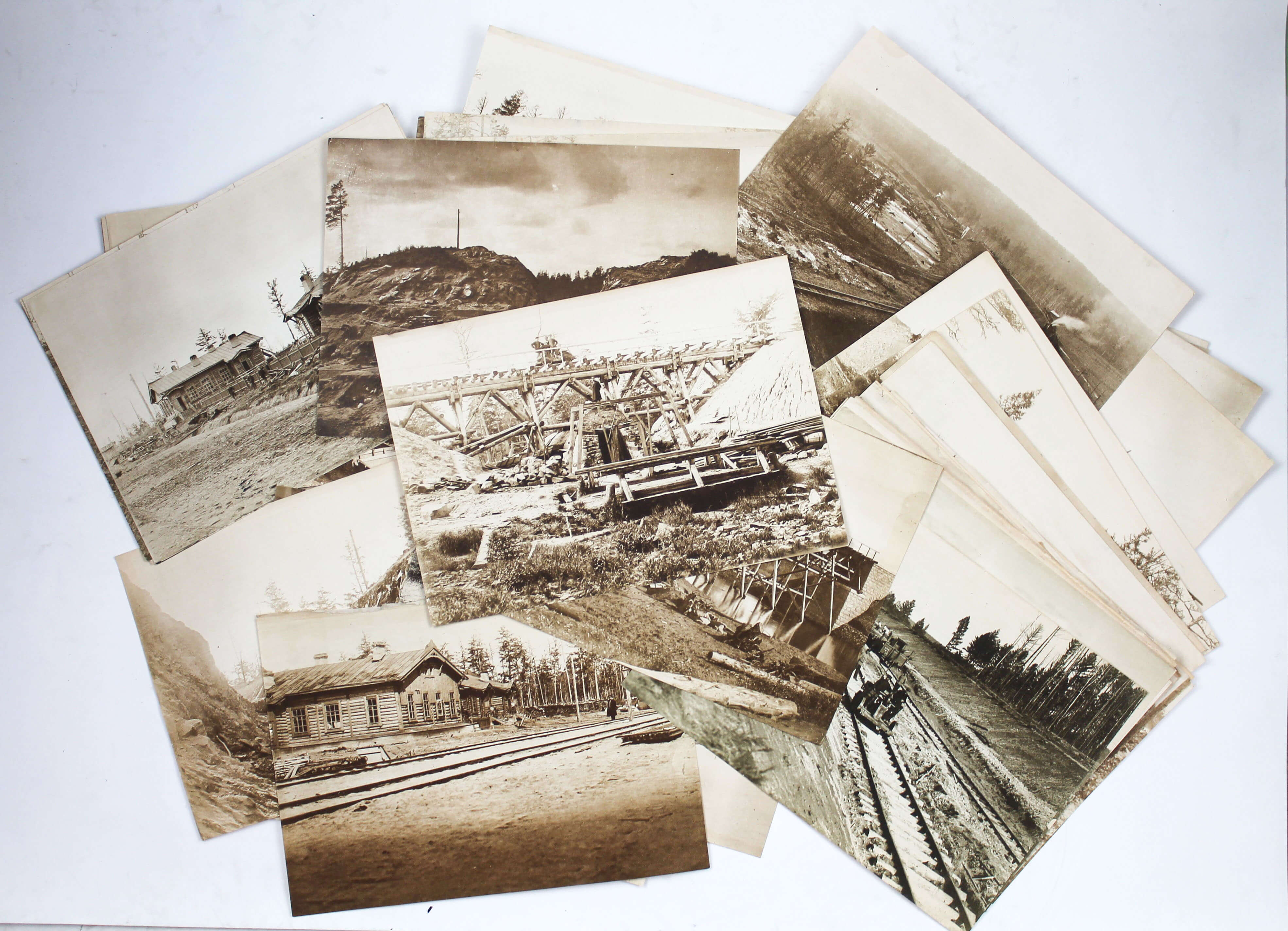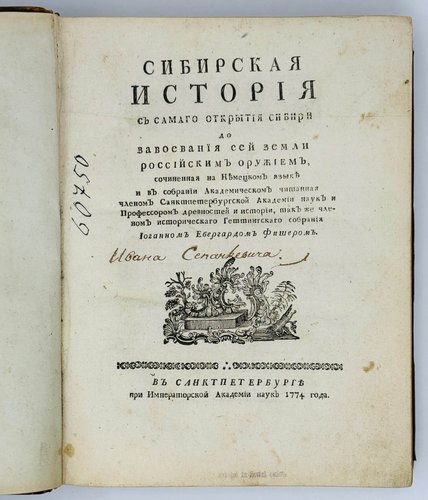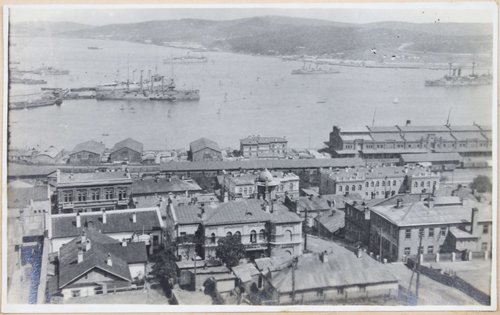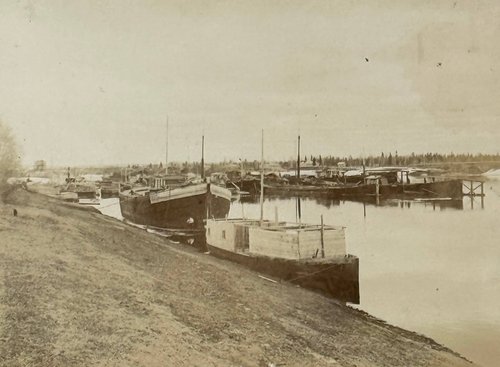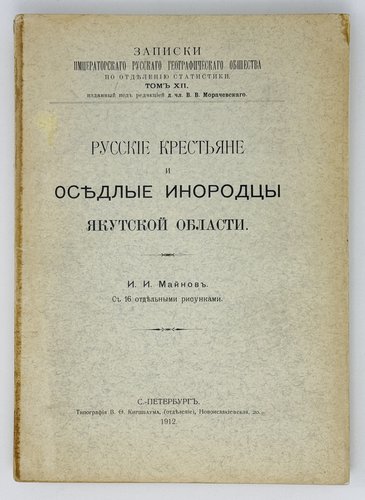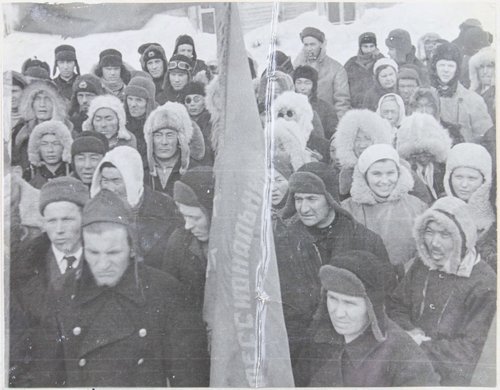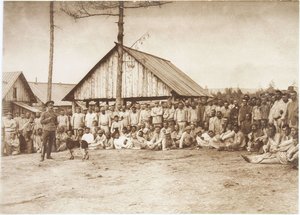
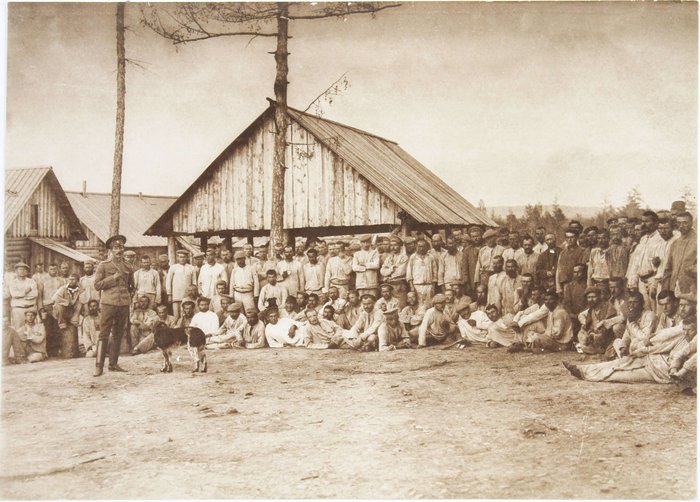
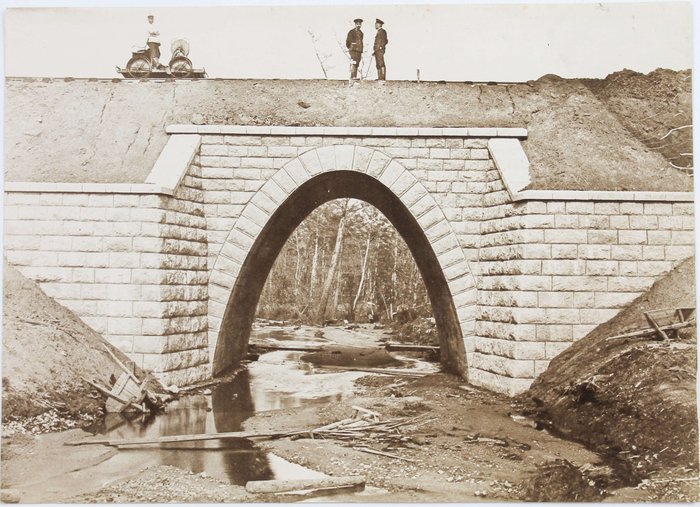
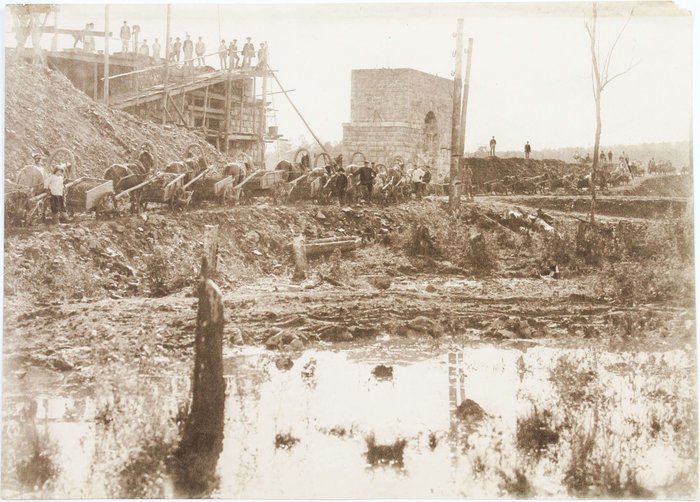
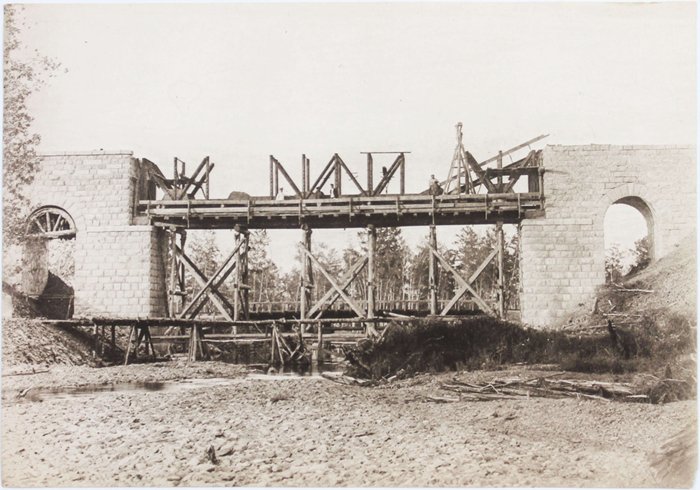
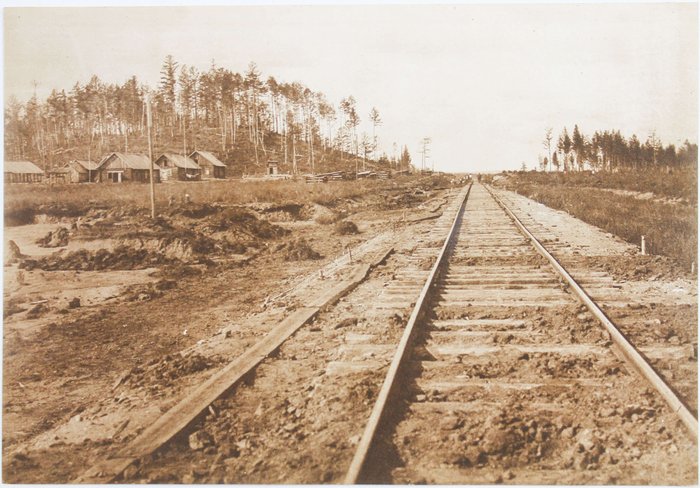
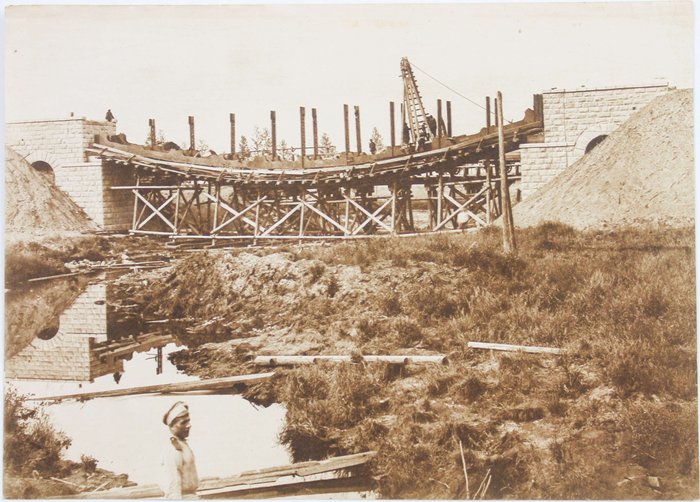
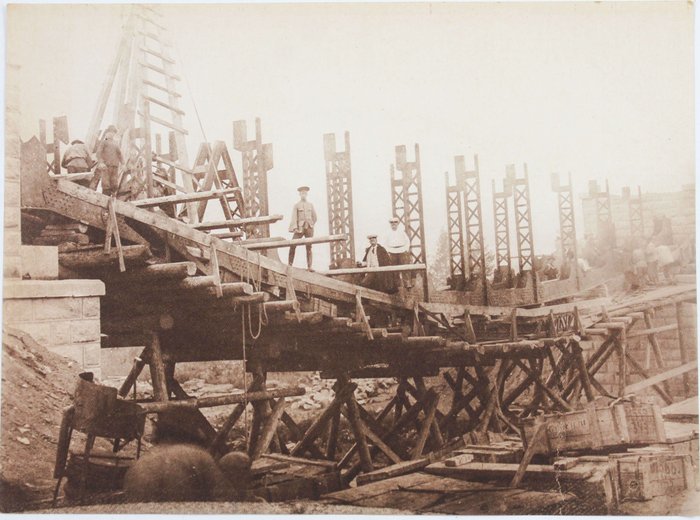
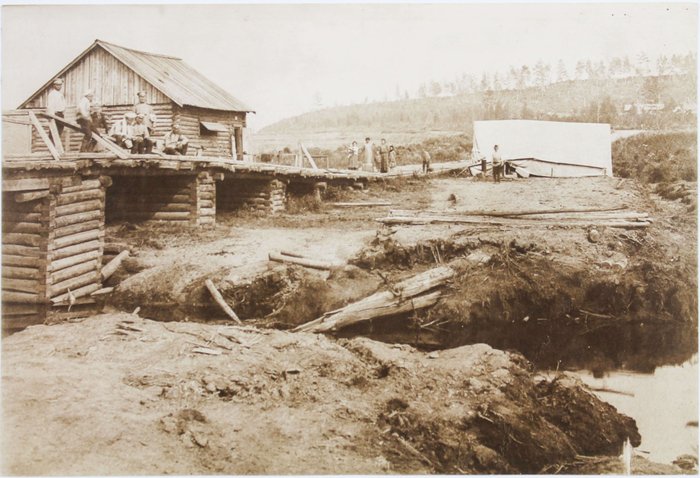
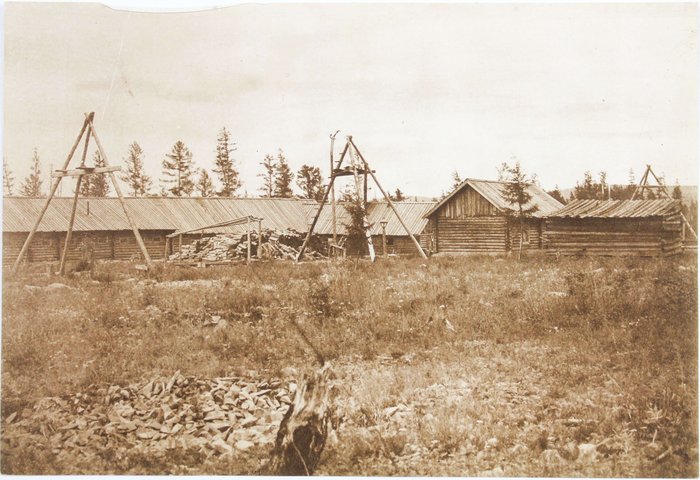
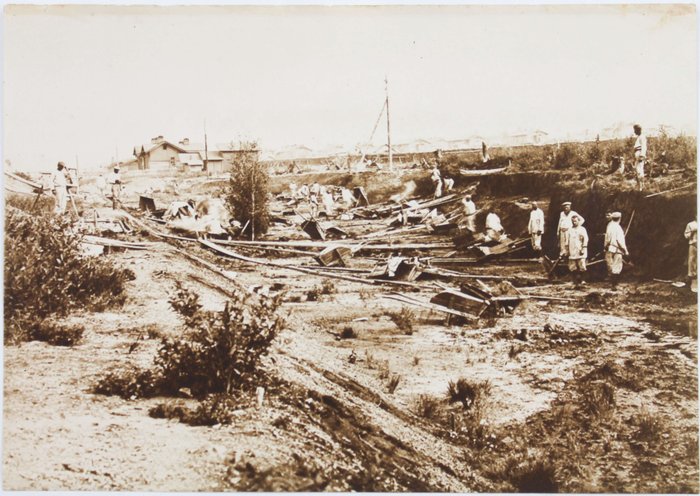
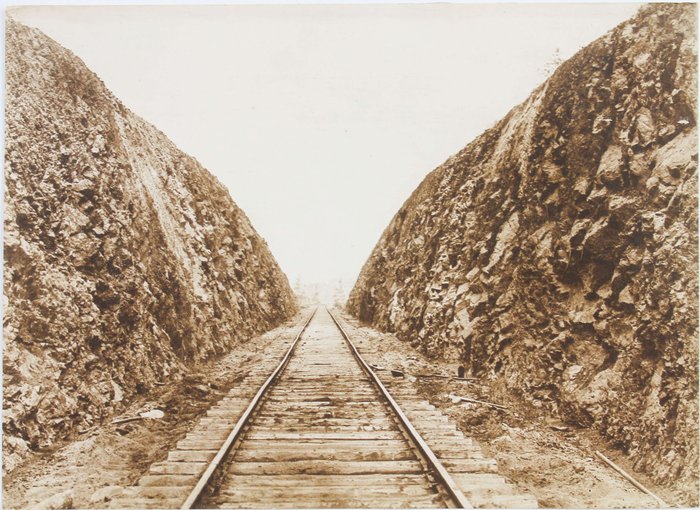
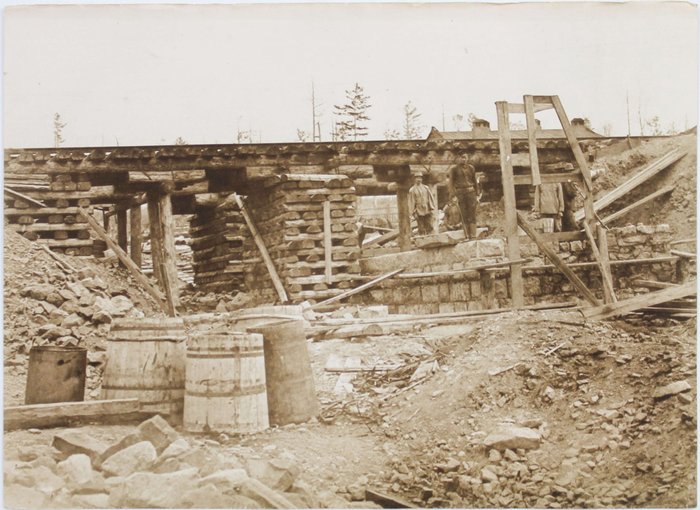
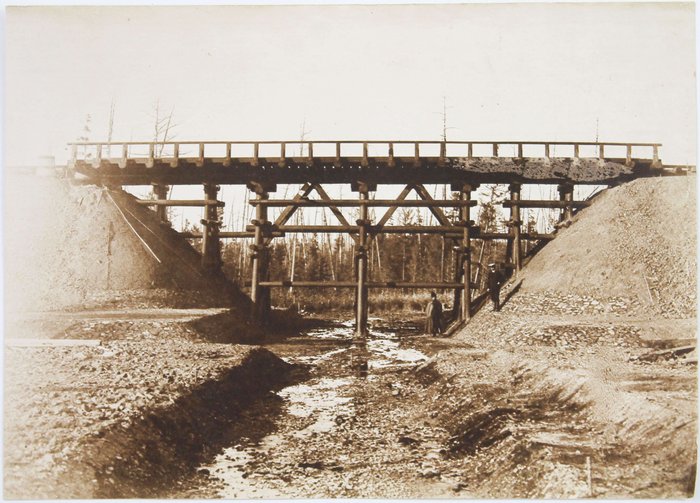
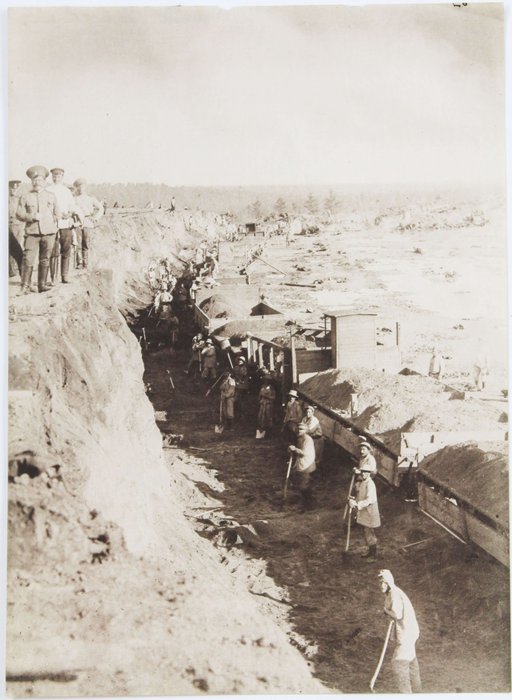
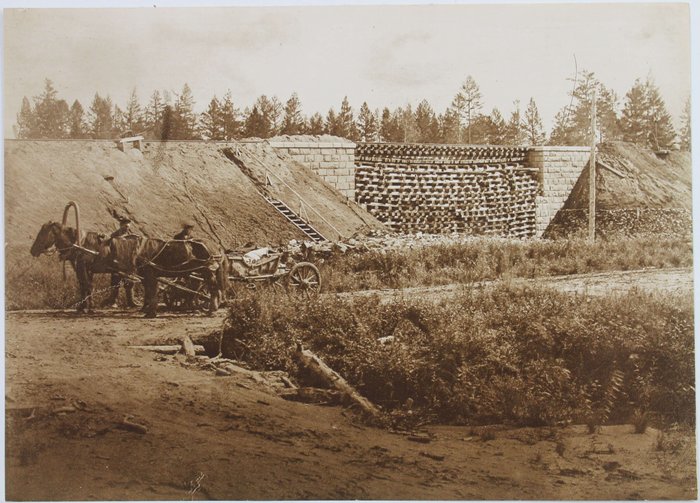

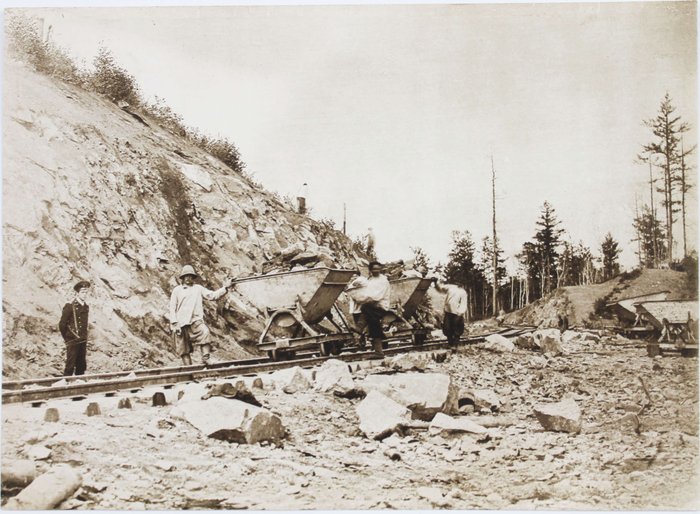
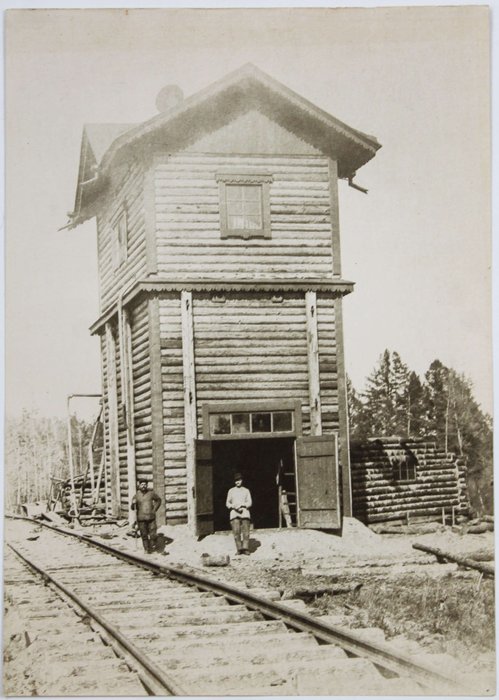
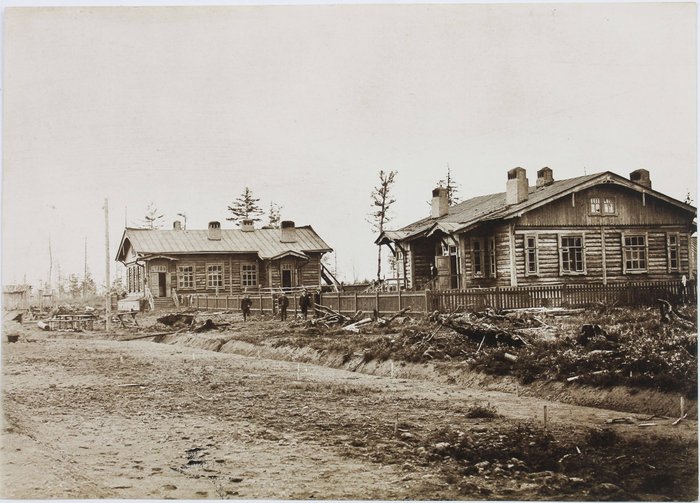
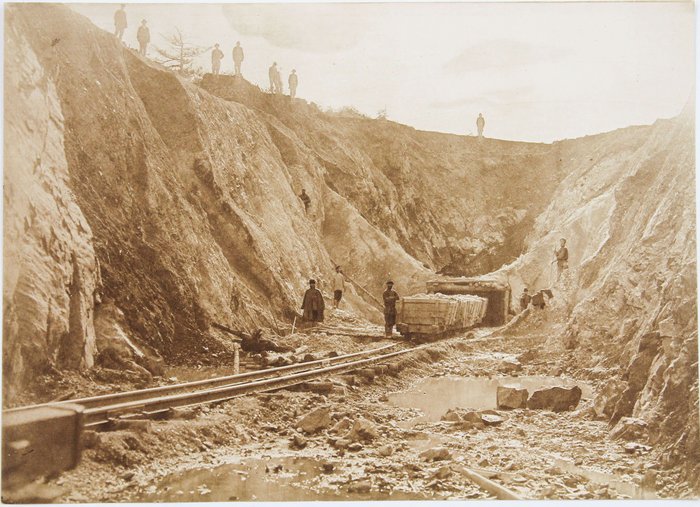
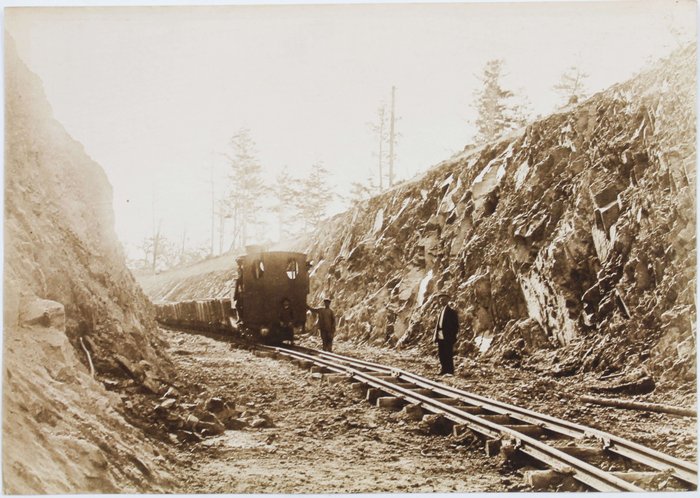
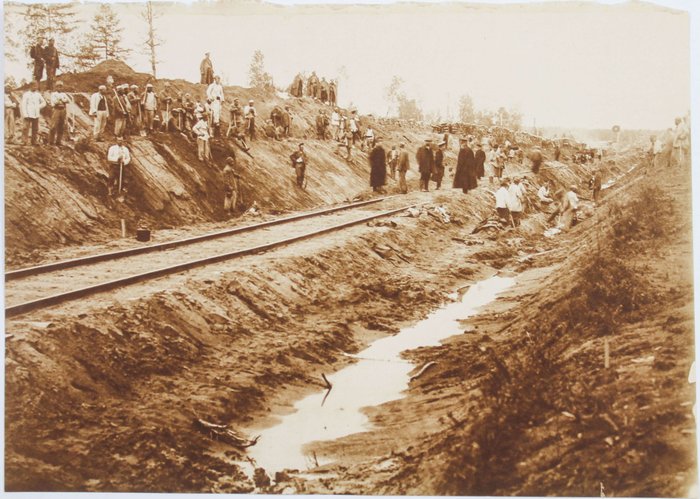
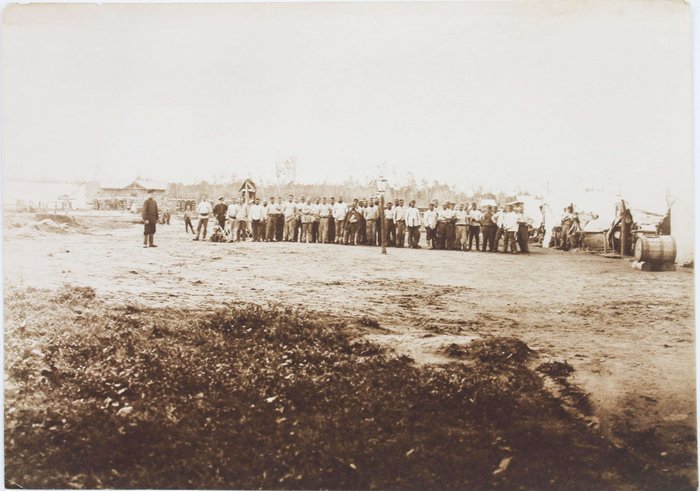
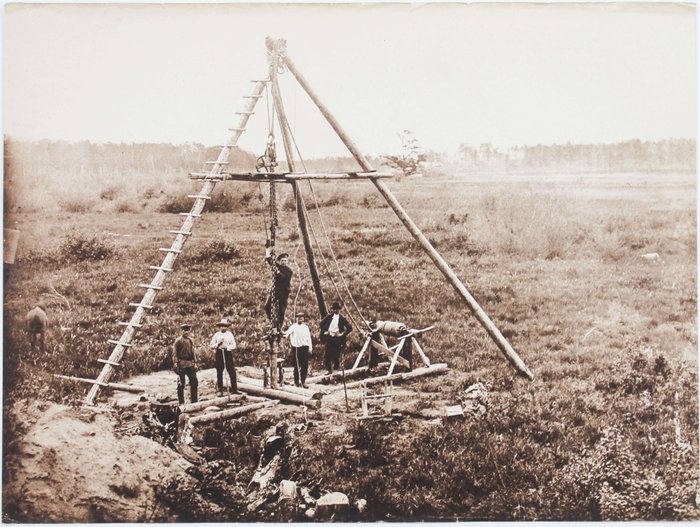
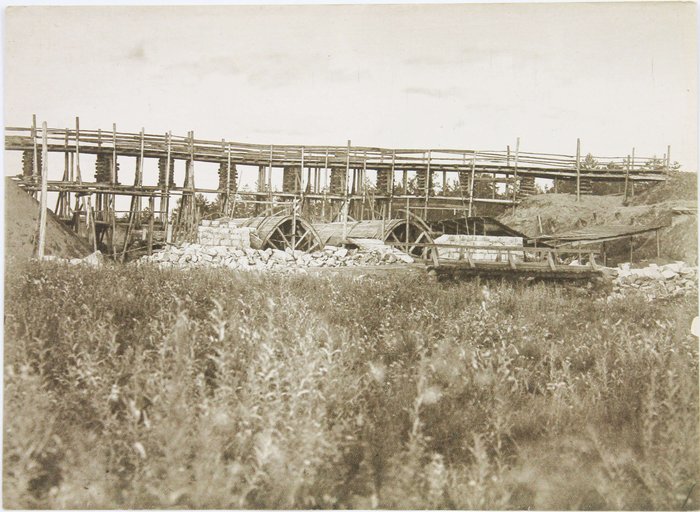
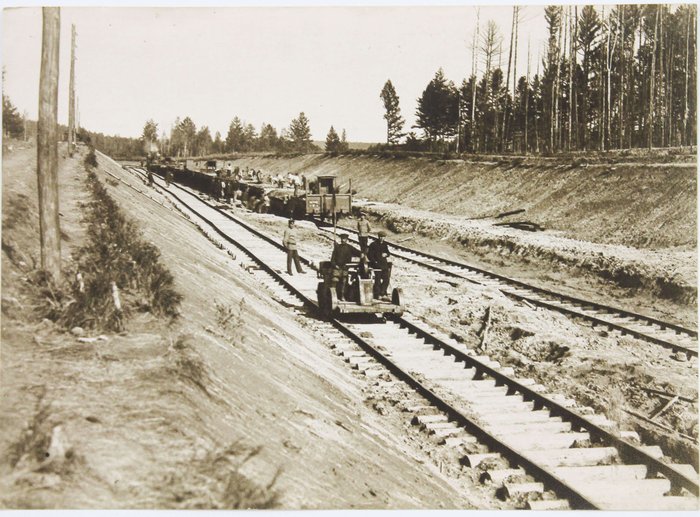
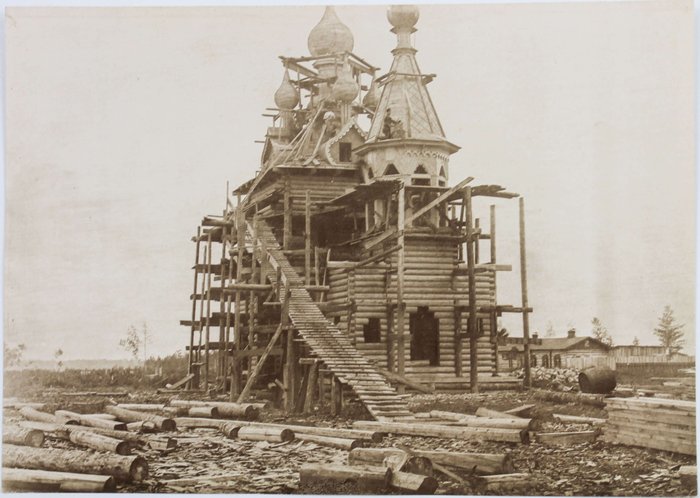
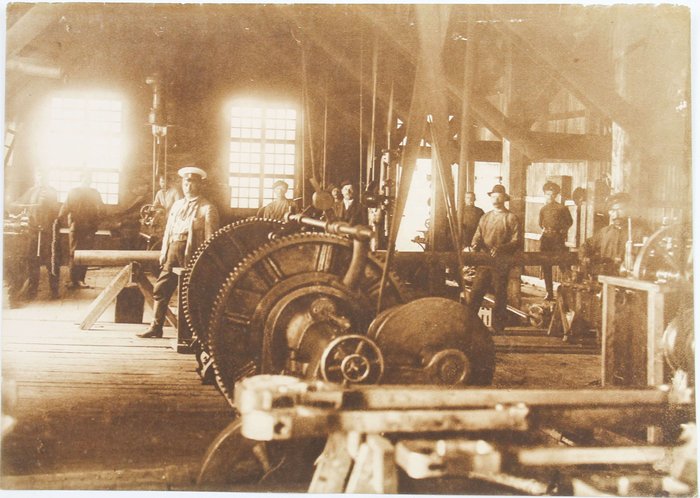
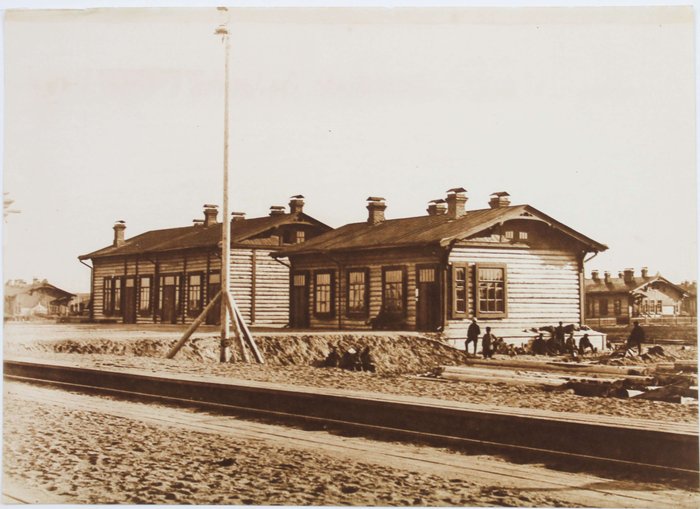

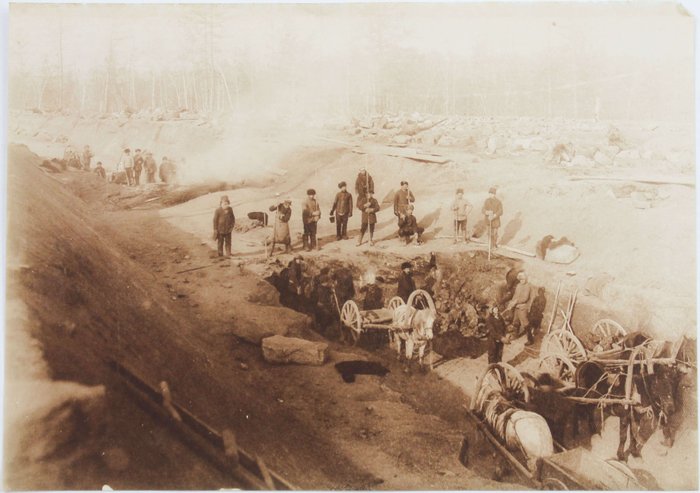
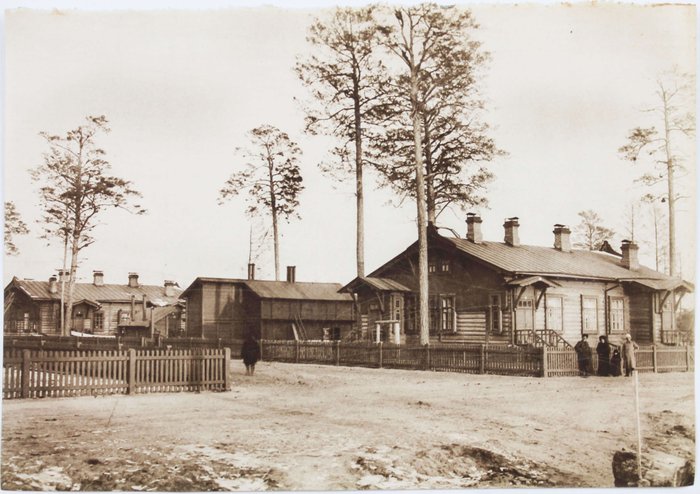
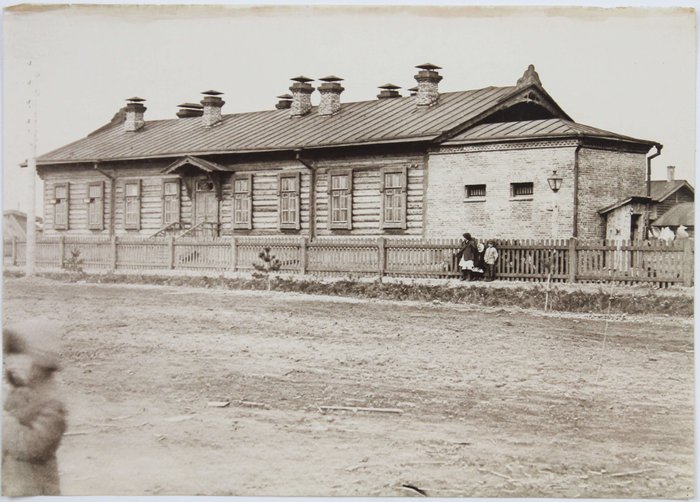
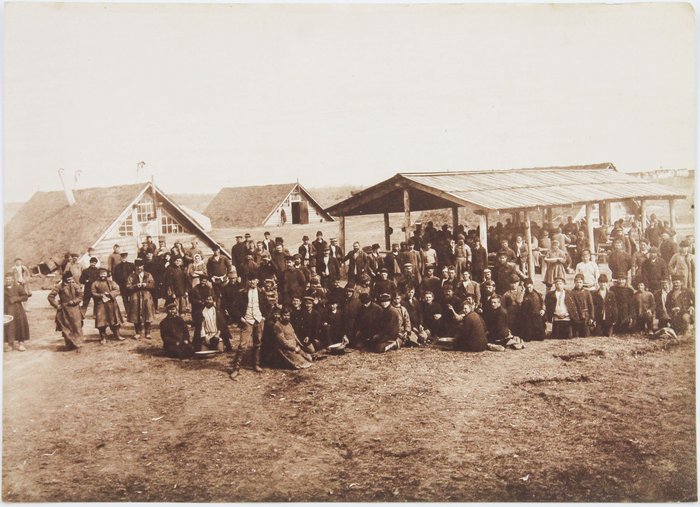
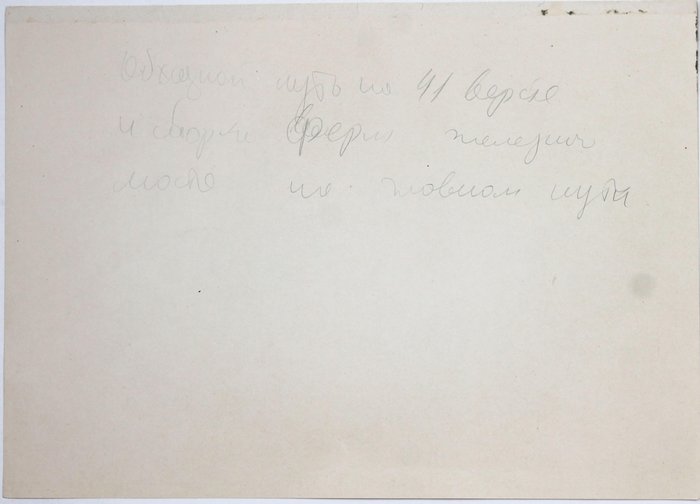
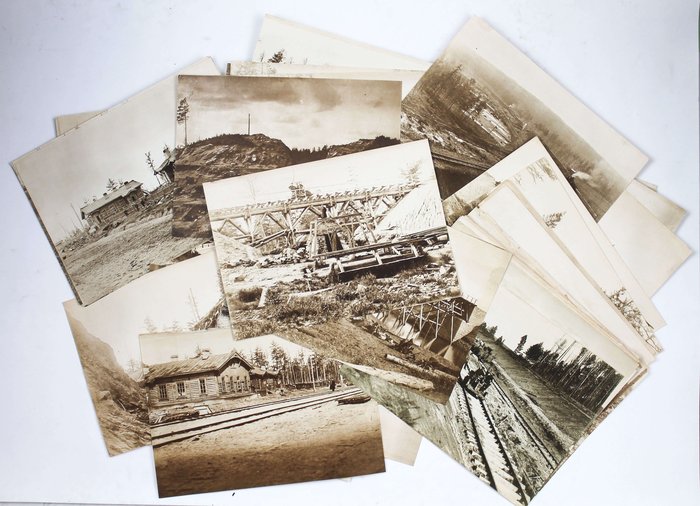
#PE15
Ca. 1910-1914
202 loose phototypes, each ca. 18,2x25,3 cm (7 ¼ x 10 in). 32 phototypes with period ink or pencil captions on the verso, a couple of prints dated. Several phototypes with fold marks and minor tears at the edges, one phototype rubbed, but otherwise a very good collection.
Historically significant collection of early phototypes produced during the construction of the Central Section of the Amur Railway and showing newly built railway stations, major construction activities, convict workers, penal infrastructure, and emerging towns along the route.
The Amur Railway (1908–1916), a 2,144-kilometer segment of the Trans-Siberian route, was initiated under Tsar Nicholas II to link the Russian Far East with the rest of the empire. The railway consisted of four sections, with its Central Section (1910–1914), stretching from Station Kerak to the River Bureya. The project introduced unprecedented mechanization for Russia at the time, employing American trucks, buses, and steam-powered excavators. Due to the extremely harsh conditions, much of the work was carried out by prisoners. In total, over 54,000 hired laborers and convicts took part in the construction. The line played a crucial role in consolidating Russia’s presence in the Far East—and remains in active use today.
The collection features 202 large-size phototypes, illustrating the construction of the greater part of the Central Section of the Amur Railway. The plates show ten railway stations in Taldan (general view, a passenger building & nearby church), Gonzha (general view, a water storage building & nearby mineral spring), Magdagachi (general view, a passenger building, depot, workshop, a nearby church & street view), Tygda (general view, brewery), Ushuman (general view, a passenger building, depot, a nearby church & communal houses), Tu (communal houses), Chernyavo (communal houses & sawmills), Gondatti (general view, a passenger building, meteorological station, communal houses, horse yard, garage for postal and automobile service, water storage buildung), Ledyanaya (general view), and Alekseevsk (a passenger building, treasury, church, communal houses).
About fifteen excellent group phototypes portray both hired laborers and convict workers at excavation sites, in quarries, and near barracks or work camps along the route. The prisoners, often in patched clothing, are shown loading ballast, digging cuts, or resting at camp under police surveillance. A particularly notable series depicts the “Sokolovsky Stan” convict camp at the 20th verst of the Chernyaev branch. Laborers from this camp were deployed under especially challenging weather/geographical conditions.
Over sixty well-executed images illustrate various construction activities, including “rock cutting,” “water source surveying,” and “track ballasting.” Early work equipment like shovels, narrow-gauge tipper carts, horse-drawn wagons, trucks, ballast trains, and hand-operated drilling rigs is clearly visible.
The collection also includes about ten excellent views of Alekseevsk (today’s Svobodny), a town founded in 1912 during the construction of the Amur Railway and later known as a major Soviet labor camp. The images include a general view of the town, the office and residence of the town manager, a two-class school of Priamursky Governor-General Nikolay Gondatti, the post office, treasury, pier, and a children’s shelter established by the Central Amur Railway Charitable Committee. One interesting scene shows children from the railway orphanage sitting on the shelter’s steps with their teacher and a military man.
There are also six early views of the villages Gondattievo (present-day Shimanovsk) and Alekseevsk (now part of Svobodny), featuring general views and a pier with cargo ships docked.
The rest of the plates mostly show railway block posts (Burinda, Chagany, Gudachi, Sivaki, Selitkan, Belogorye, and Belonogovo), steal & temporary wooden bridges, rail tracks & trams, workers in local workshops, etc.
Overall, historically significant, extensive collection documenting the construction of the Central Section of the Amur Railway.

